And if the world has ceased to hear you,
Say to the silent earth: I flow.
To the rushing water, speak: I am.
Sonnets to Orpheus II, 29, R. M. Rilke
To get closer to the exhibition of contemporary art To Martian Anthropologists (hereafter referred as TMA) curated by Chun-Yi CHANG this year (2020), I made an exception not to be over-prepared and went straight to the exhibition venue in the New Taipei City Arts Center. In my opinion, this was a gesture of seeing more in line with “seeing without prejudices”. First of all, by accident, I ran into the dark second exhibition room (Fig. 1) and, without knowing the rules of the game, searched blindly for the QR Code supposed to be attached somewhere. All attempts failed. I wandered in the gloomy room as if in a trance of being a stray Martian landing fiercely on Earth. I quickly realized that my perceptual disorder was different from the cultural shock the Martians might experience and that the disharmony I felt could not but take root in the seeing habit of human beings, including the given experiences of online exhibitions. The art space used to be divided into physical exhibition venue and online platform between which the potential dialectics was neglected by viewers. However, the impact from the old seeing habits could be the light at the end of the tunnel to approach the exhibition.
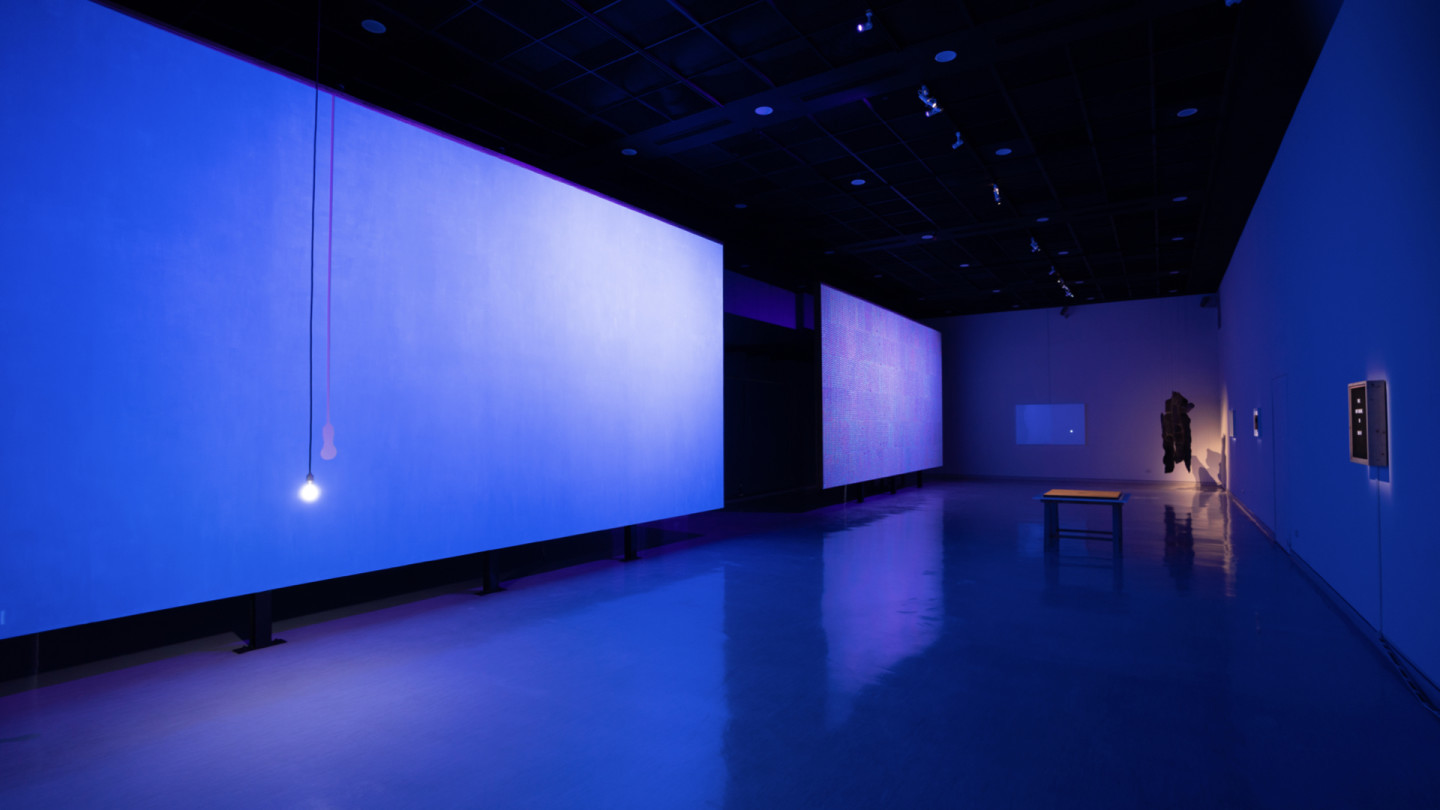 Fig. 1: "To Martian Anthropologists" - Exhibition Room II
Fig. 1: "To Martian Anthropologists" - Exhibition Room II
The curator’s planning strategy--“online as primary, offline (the physical) as secondary”--of the exhibition during the pandemic seems to be just one of the preventive measures among performing arts nowadays, but it tells more. TMA actually launches a profound survey of the long dominant mode of on-site seeing: the physical exhibition venue here is not the main space, but constitutes all kinds of relationships echoing the virtual online platform. Online and offline, the two might be different types of the same nature, two sides of the same coin, indispensable or complementary to each other, and so on. The 15 foreign and domestic artists of contemporary art are invited to create under the double-track mode and at the same time, treat the fictional Martian anthropologists as “predetermined readers” from whom some clues are left behind for a survey of art on Earth. It won’t be difficult for us to understand that, as the Chinese proverb goes, the Martian anthropologists metaphorically serve as other mountains’ stones (talents or advices) that the curator has appropriated to put aside the earthling’s prejudices as well as to polish the artist’s unrefined jade (artcraft). As mentioned earlier, the impact from the exhibition will not exist without prejudices; an even more fundamental premise will go as following: the cognitive process of human beings will not be possible without prejudices. Therefore, the public will encounter each work in the physical and virtual exhibitions according to the accumulated experiences. The far distance between Mars and Earth is not only the artist’s orbit of imagination, but also the viewer’s journey to set forth on. And the short distance between Mars and Earth lies yet in the perspective of an outsider to introspect the routines that we’ve taken for granted and now we introspect again from the perspective of an outsider.
Since TMA is an exhibition developed during the harsh time of the pandemic and echoes the critical situation the curator predetermined in the past: “How could artists continue to create under restrictions?” For me, the most inspiring argument will be defined as “how human beings respond to reality with an art of agile existence”. The curator drew more attention to video works requiring power (in 2005, her video creation, also entitled TMA). However, in response to the restrictions on the past art, we will perceive by a closer look nowadays that the agile art not only provides an escape in terms of technique, but a de-alienation of the relation between human beings and materials, and an original renovation of art itself, and even more, a philosophical reinvestigation of the essence of existence by artistic creation.
After attending the exhibition, I accidentally read Rilke's verse: “And if the world has ceased to hear you,/say to the silent earth: I flow./To the rushing water, speak: I am.” Just like Roland Barthes writes in Mourning Diary (Journal de Deuil) for the death of his mother, grief is not to be eliminated, but to be transformed into a flowing state from the static condition and repetitive, identical emotions. Reminded by these words of thought, I come to fully understand the meaning of the agile inspiration of TMA for my existence, and finally to put an end to my disoriented trek between Earth and Mars: it is not the end of the trek, but the end of the bewilderment at the beginning of the trek which suddenly becomes clear for me, for I have found my own treasure.
In the following, I will employ four key terms (Chinese homophones) to describe the categories of the agile existence touched by the exhibition works: pandemic (proliferation of the exhibition technique during the pandemic), slavery (materials that liberate human beings from slavery ), genius (original genius of art), and significance (philosophical reinvestigation of the significance of existence), according to which the artworks of the 15 artists will be briefly discussed. The categorization of the artworks may not be of rigidity, which is always flexible and leaves room for discussion. Extremely dangerous approach as it is, the text simply proposes a way of seeing the exhibition. If readers still find it too absurd, it may be blamed for the perspective of the Martians in front of the exhibition. Alas! Those who come from Earth live more or less with the prejudices.
I. Proliferation of the Exhibition Technique During the Pandemic
Generally speaking, this is an exhibition curated during the spread of Covid-19 when performing art is severely restricted because of the pandemic. Social distancing blocks inter-relationship. The earth is motionless, but people flow. TMA demonstrates not merely an exhibition mode interlacing the offline/online venues, but also the transformation of the increasing house-bound experiences into works, or the reflection on the objects in the household. The works of interactive and responsive web pages allow viewers to attend the exhibition at home, even to see a picture within a picture, a work within a work, such as Fish Tank on Live of Chien CHI and Home Theater (Fig. 2, 3) of Yung-Chun SHIH. Yet, TMA is not a passive anti-pandemic measure, nor is it a simple digital representation of ordinary online performances and exhibitions, but a more aggressive curatorial creation and creative curating. The fact explains why I abandon the terms such as technical “escape” or “survival”, but turn to “proliferation”. Whether facing the challenge of the pandemic or the premise of keeping certain social distancing instead of breaking up, TMA proves itself as a subtle combination of the on-site and online exhibition interfaces and extends itself to the future: even when the pandemic is over, the mode mixing reality and virtuality still has infinite potentiality of development. In the past, I used to have difficulty reviewing vividly the given art exhibitions in history, and now, the exhibition is permanently online, including a 720-degree interface of virtual environment. Although I cannot personally attend the site again in the future, I can still enjoy the high-degreed restoration of the exhibition in the virtual world. As far as the collection is concerned, viewers can browse the Internet at any time and thus “digitally” collect the works.
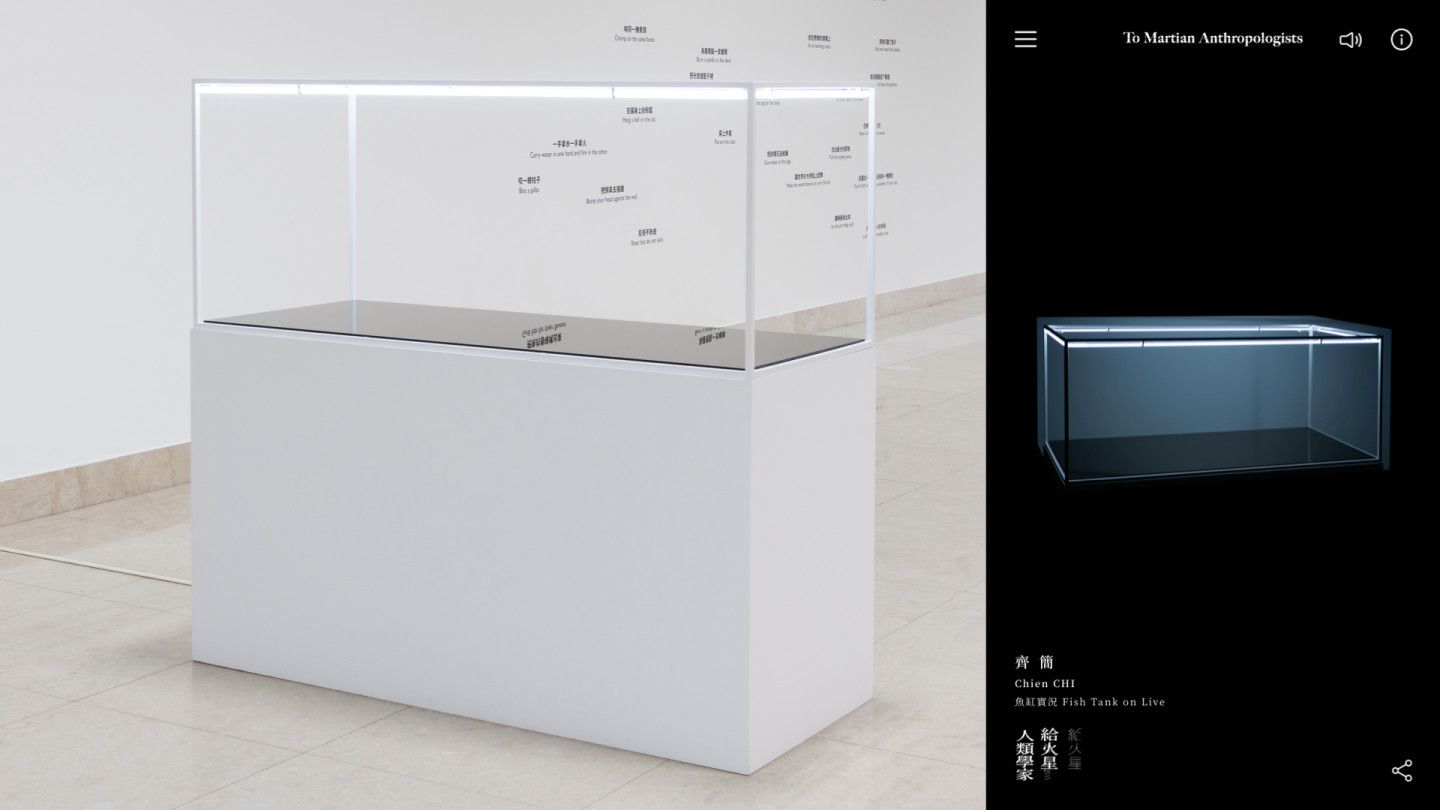 Fig. 2, left: Chien CHI, Fish Tank on Live, 2020, baking paint iron, neon tube, mirror, wood, 64×161×148 cm. Right: Chien CHI, Fish Tank on Live, 2020, interactive and responsive web page.
Fig. 2, left: Chien CHI, Fish Tank on Live, 2020, baking paint iron, neon tube, mirror, wood, 64×161×148 cm. Right: Chien CHI, Fish Tank on Live, 2020, interactive and responsive web page.
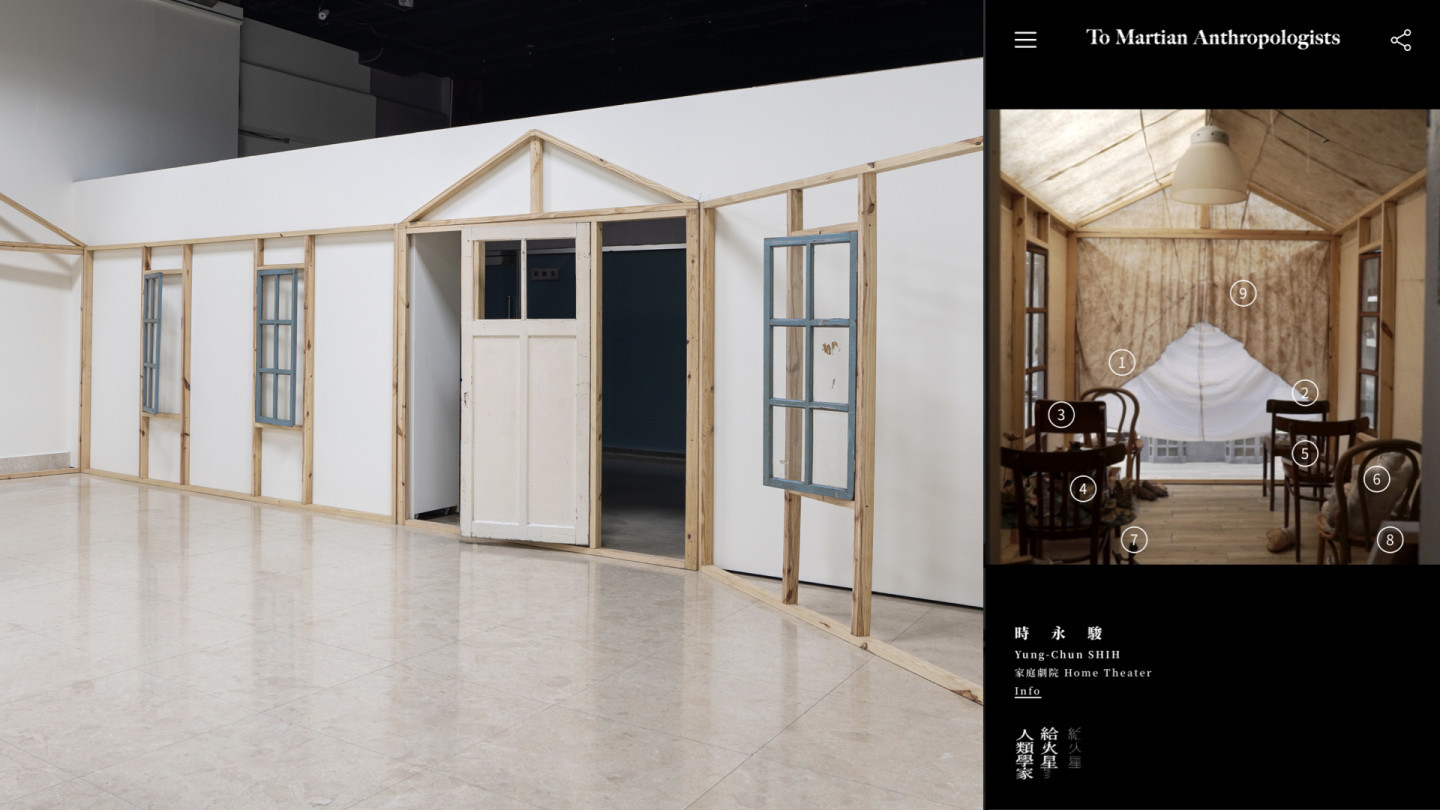 Fig. 3 left: Yung-Chun SHIH, Home Theater, 2020, ready-made object, chair, cloth, wood, dimensions variable. Right: Yung-Chun SHIH, Home Theater, 2020, interactive and responsive web page.
Fig. 3 left: Yung-Chun SHIH, Home Theater, 2020, ready-made object, chair, cloth, wood, dimensions variable. Right: Yung-Chun SHIH, Home Theater, 2020, interactive and responsive web page.
II. Materials that Liberate Human Beings from Slavery
“To the rushing water, speak: I am.” The development of rapidly changing technology and virtual world resembles turbulent torrents; information from the internet grows and differs in every single second. Science and technology are supposed to be wielded by mankind, but the enslavement of mankind by material and science has only intensified ever more in our times. There is no lack of the TMA works that reflect on the earth life and limits of art and attempt by art to revitalize the relationship between mankind and material, whether it is about endowing the daily objects with soul-like rhythms and sounds, such as Material Store (Fig. 4) by Jui-Chien HSU and Yannick DAUBY, Letter (Fig. 5) by Chih-Cheng LAI, and No Surprises, Metamorphoses (Fig. 6) of Joyce HO, or about vitalizing the technological screen (Light Boat, Increase and Decrease of Chih-Cheng LAI, Fig. 7), and enriching the screen display (the series of Pixel and Star Cluster, Calibrate: Blue Screen by Yu-Cheng HSIEH, Fig. 8). I’M LITTLE, BUT I HAVE BIG DREAMS (Fig. 9) by Wan-Jen CHEN provides us a satirical bird’s view of the phubbers on vacation. Just like the situation in the MRT nowadays, everyone is phubbing regardless of whether they have seats or not. If one day the Martians run into it, they could not help but think that the mobile phone is an innate organ extended from the human palm. As such, the above-mentioned works endow the material matter with an alternative dynamics, accompanied with the visiting route of the physical exhibition and special technique of the online platform, in order to provide viewers a refreshing perception of the relationship between daily object and mankind and to launch an overall review on the deep-rooted servility of human beings facing 3C products. No matter what the intention of the exhibition might be, it is obvious that the curator attempts to revitalize the sclerosis of life today, which is similar to the curatorial statements of her previous exhibitions Air Plant and Daily+ and consistent with the argument proposed by the French scholar François Jullien in Dé-coïncidence. Compared to the rushing water, the declaration of “I am” is not a state of stagnation, but a continuous and profound investigation and confirmation of existence.
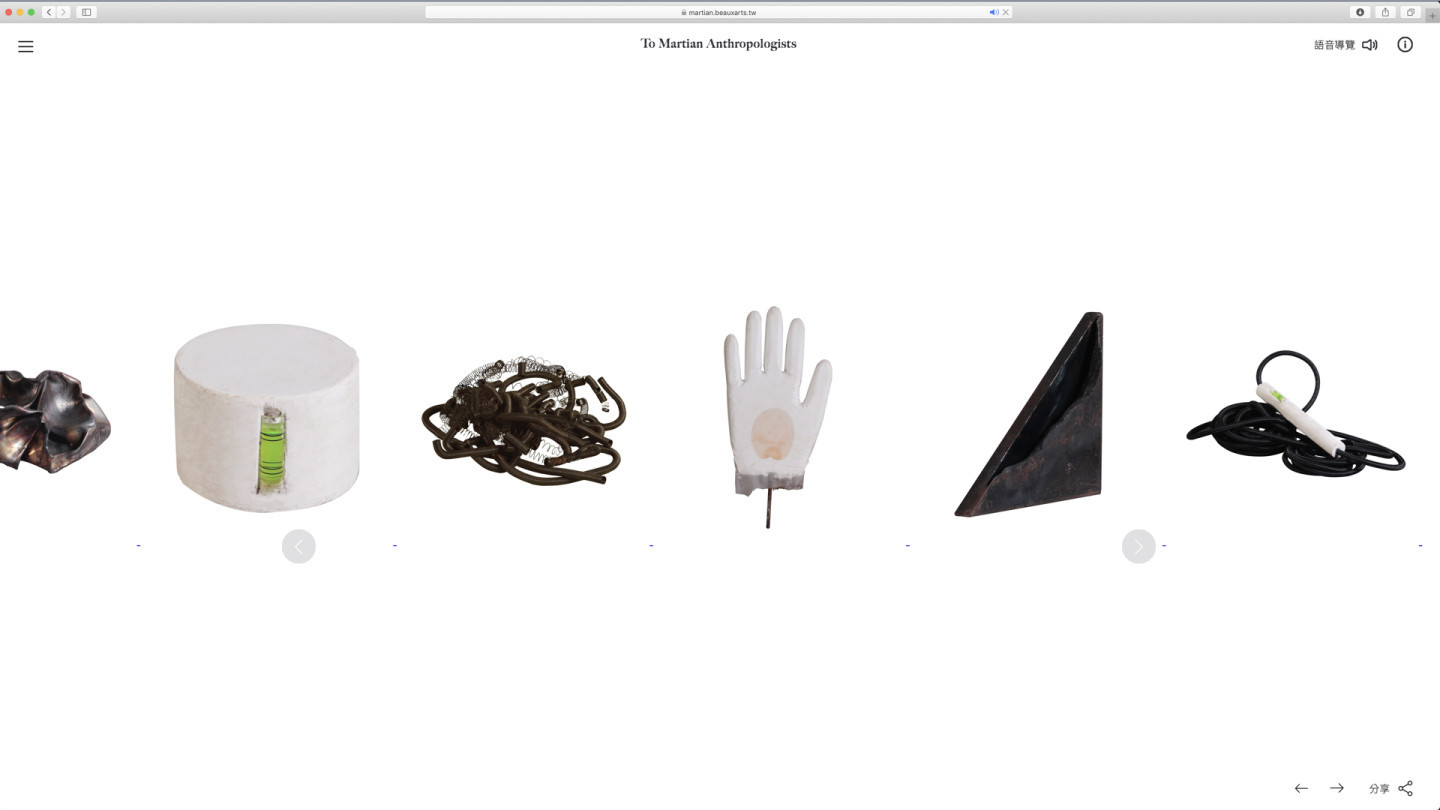 Fig. 4: Jui-Chien HSU × Yannick DAUBY, Material Store, 2020, interactive and responsive web page.
Fig. 4: Jui-Chien HSU × Yannick DAUBY, Material Store, 2020, interactive and responsive web page.
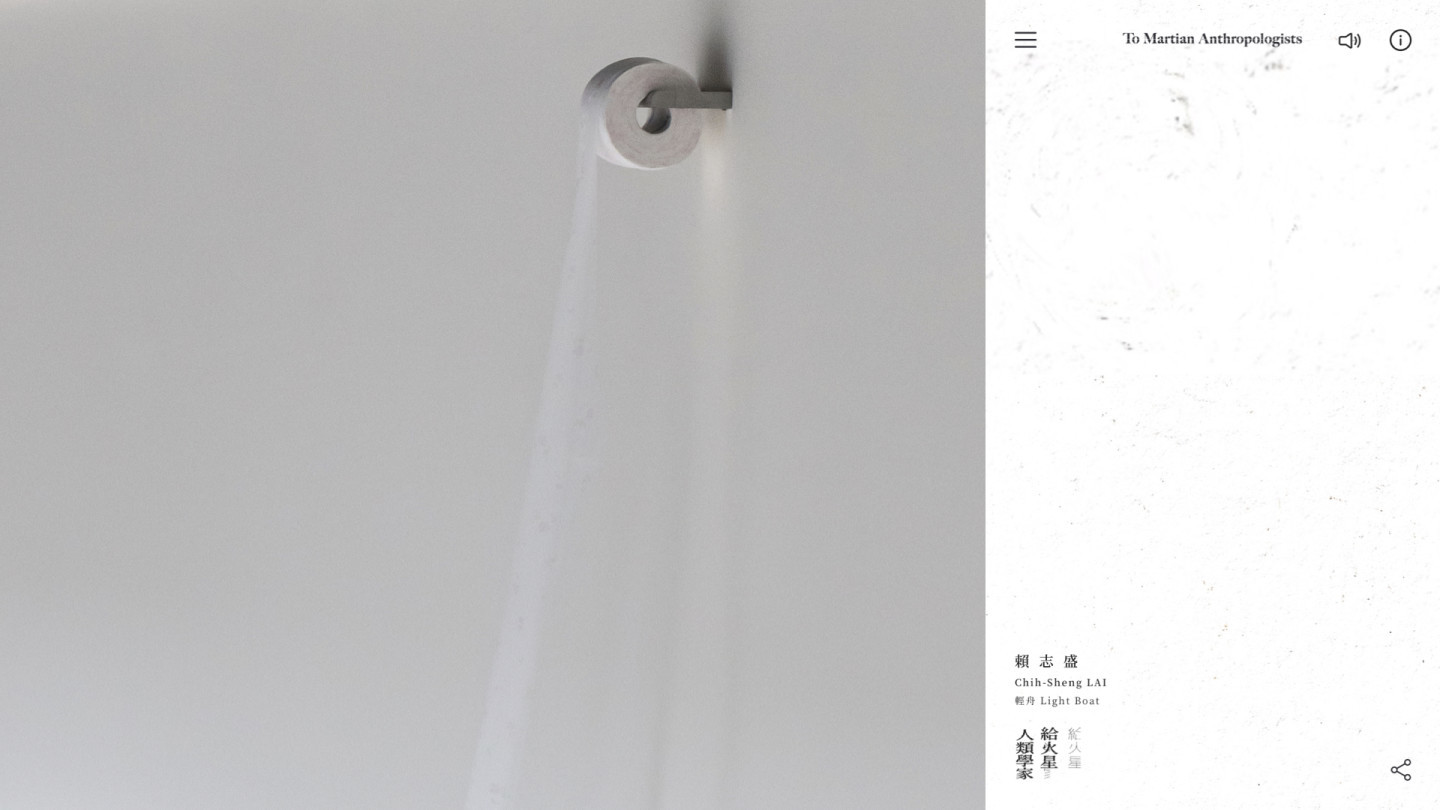 Fig. 5, left: Chih-Sheng LAI, Letter, 2019, stainless steel, toilet paper, wind, dimensions variable. Right: Chih-Sheng LAI, Light Boat, 2020, interactive and responsive web page.
Fig. 5, left: Chih-Sheng LAI, Letter, 2019, stainless steel, toilet paper, wind, dimensions variable. Right: Chih-Sheng LAI, Light Boat, 2020, interactive and responsive web page.
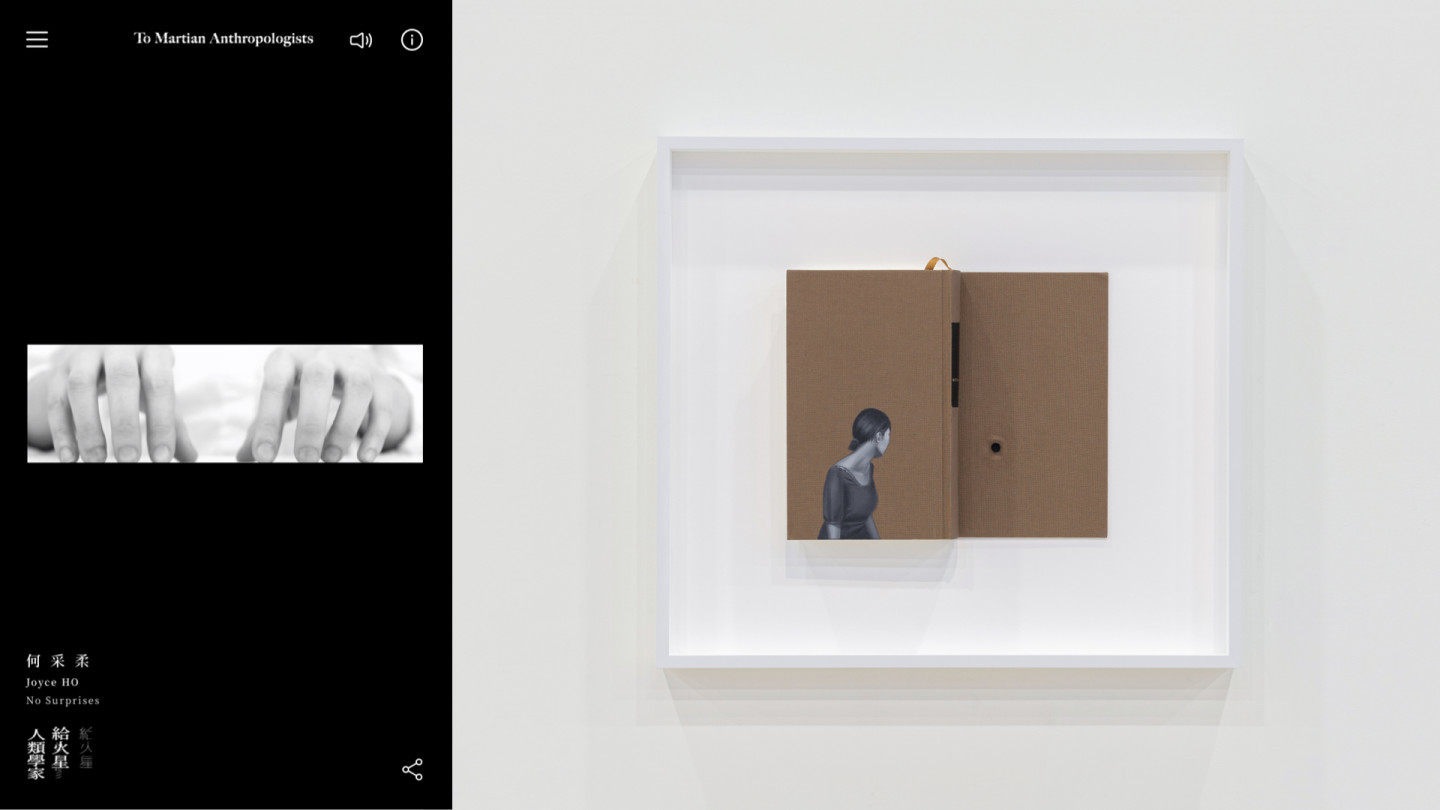 Fig. 6 left: Joyce HO, No Surprises, 2020, interactive and responsive web page. Right: Joyce HO, Metamorphoses, 2019, acrylic paint, book cover, aluminum frame 41.5×46×4 cm.
Fig. 6 left: Joyce HO, No Surprises, 2020, interactive and responsive web page. Right: Joyce HO, Metamorphoses, 2019, acrylic paint, book cover, aluminum frame 41.5×46×4 cm.
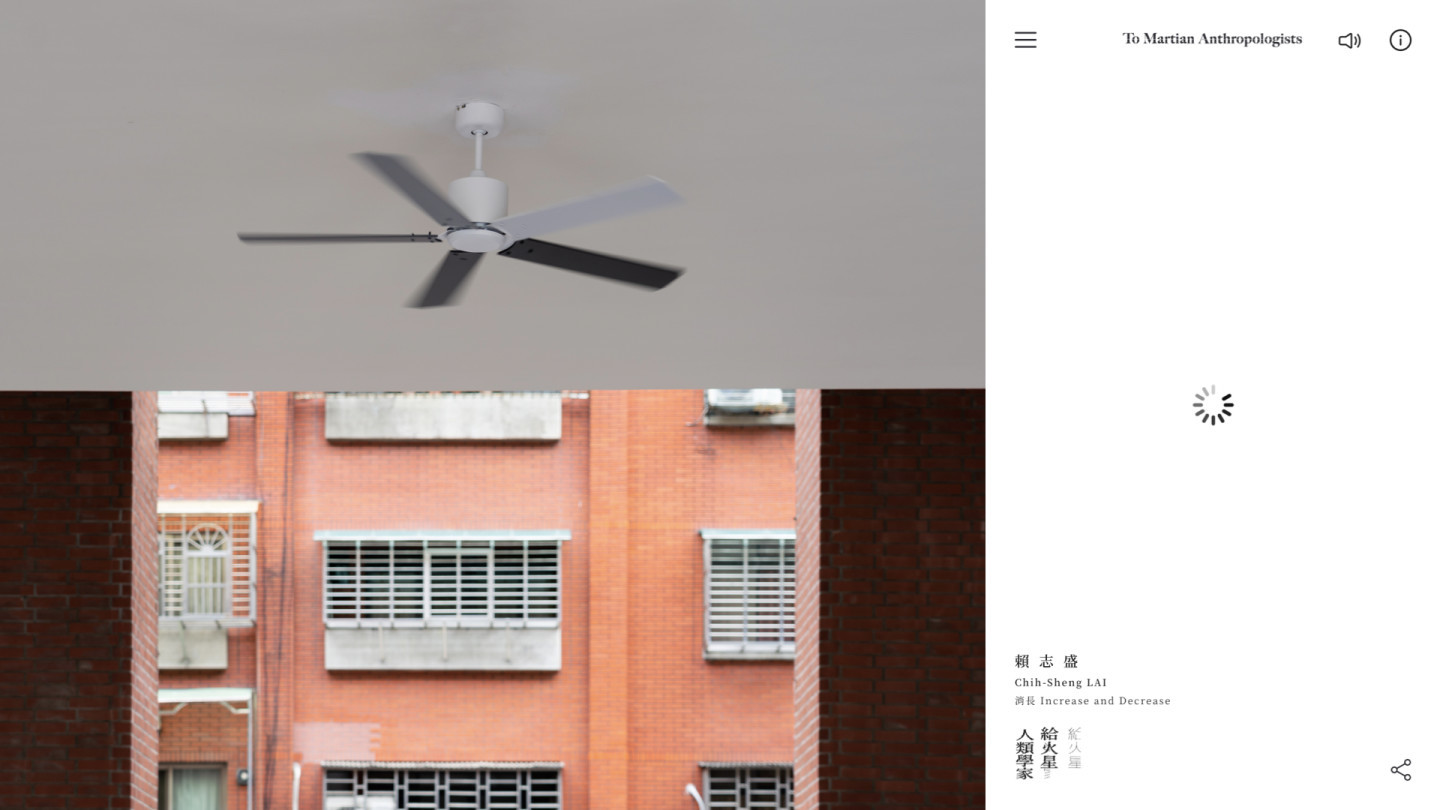 Fig. 7, left: Chih-Sheng LAI, Breeze, 2020, ceiling fan, paint, dimensions variable. Right: Chih-Sheng LAI, Increase and Decrease, 2020, interactive and responsive web page.
Fig. 7, left: Chih-Sheng LAI, Breeze, 2020, ceiling fan, paint, dimensions variable. Right: Chih-Sheng LAI, Increase and Decrease, 2020, interactive and responsive web page.
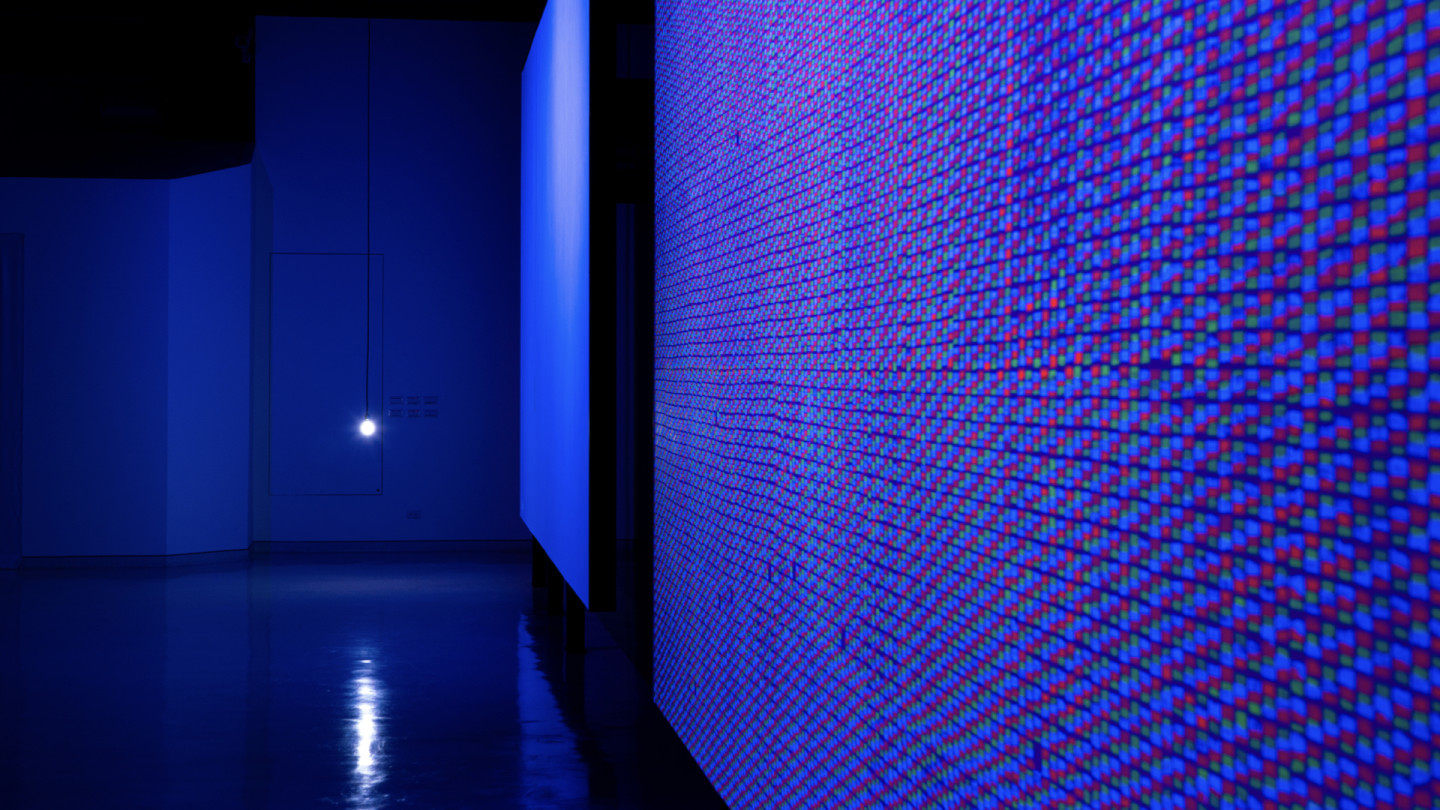 Fig. 8, from right to left: Yu-Cheng HSIEH, Pixel and Star Cluster; Yu-Cheng HSIEH, Calibrate : Blue Screen, 2020, fluorescent paint, ready-made object, fluorescent ink, fluorescent lamp, dimensions variable.
Fig. 8, from right to left: Yu-Cheng HSIEH, Pixel and Star Cluster; Yu-Cheng HSIEH, Calibrate : Blue Screen, 2020, fluorescent paint, ready-made object, fluorescent ink, fluorescent lamp, dimensions variable.
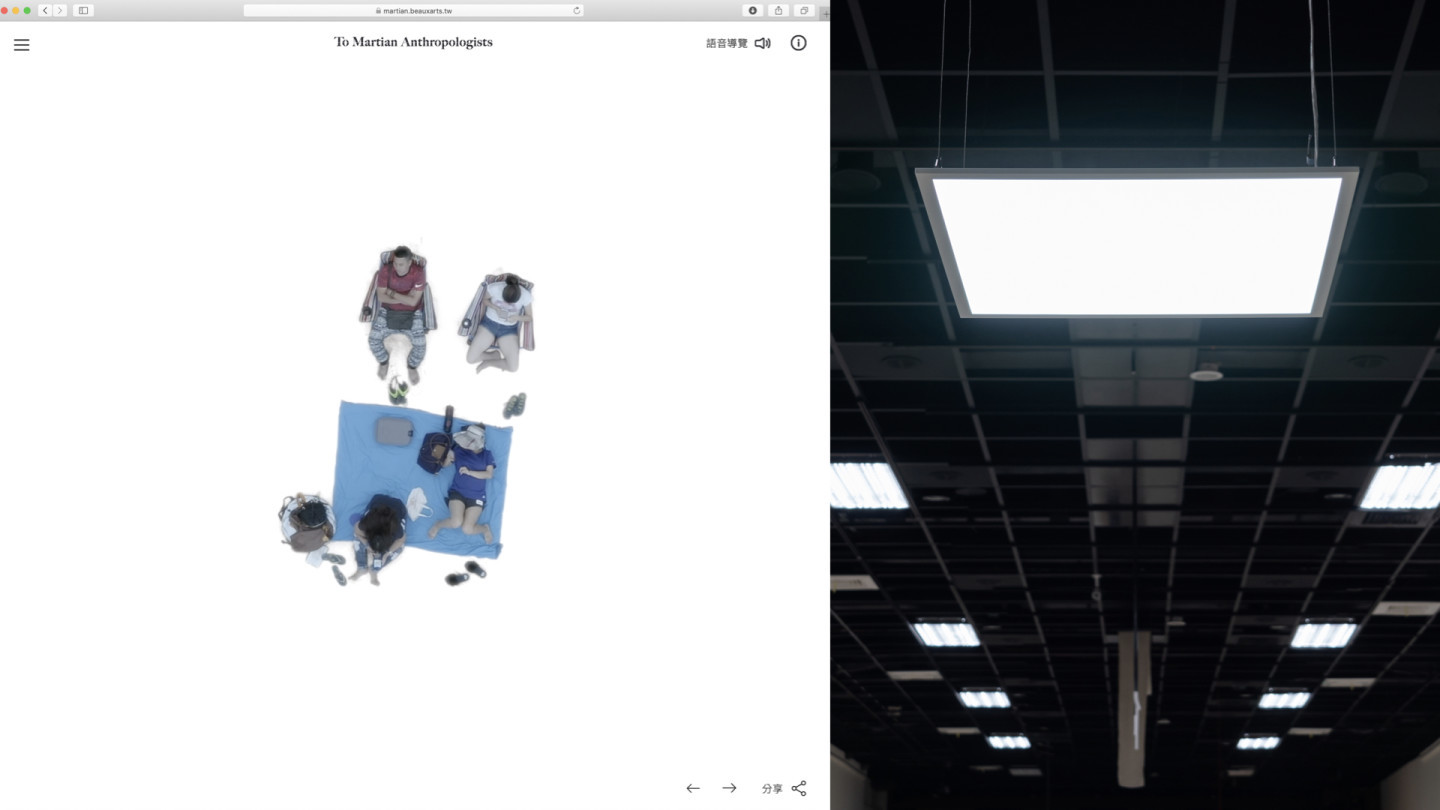 Fig. 9, left: Wan-Jen CHEN, I’M LITTLE BUT I HAVE BIG DREAMS, 2020, interactive and responsive web page. Right: I’M LITTLE BUT I HAVE BIG DREAMS, 2020, LED panel light, 60×60 cm.
Fig. 9, left: Wan-Jen CHEN, I’M LITTLE BUT I HAVE BIG DREAMS, 2020, interactive and responsive web page. Right: I’M LITTLE BUT I HAVE BIG DREAMS, 2020, LED panel light, 60×60 cm.
III. Original Genius of Art
The so-called “genuity” here refers to art’s attribute approximately corresponding to essence: creation, originality, innovation, and differentiation from historical works. As mentioned earlier, TMA is not a passive curating as a preventive measure against the pandemic, but a positive breakthrough in the given cognition of art, unique dimension of artistic style, and utterance of new artistic vocabulary--the characteristics shared by all the works of the 15 artists. Some impressive examples will be sufficient to justify the point. In Pharmakos by Dorian Gaudin (Fig. 10), the curator went to Yingge to choose nine ceramics for the France-born, New York-based artist, who could not come to Taiwan in person. In response to the undergoing pandemic, the gesture suggests a parallel mode of co-creation between curator and artist. Each week during the exhibition, the ceramic voted online as the ugliest will be broken in the physical venue by the curator, as a ritual of novel experiences that combines the virtual and physical as a sequential rotation. The act of smashing coincides with the falling hammer of Hammer Price (Fig. 11) by Claude Closky next door, one after another, which has to be said as one of the devils hidden in the details. The fact that I failed almost all the questions from Hammer Price nakedly reveals the extreme weirdness of the auction price in contemporary. In this regard, the common people from Earth will be no less surprised than the Martians. Voting for a pharmakos makes me guilty because I really don’t think the ceramics in front of me are ugly and I feel sorry for Raymond I voted. In addition, Discrete Works (thanks to Bruegel ) by Eric WATIER and Chun-Yi CHANG (Fig. 12) figures one of the works left much to be savored. Going out of the venue, I can’t help searching for the meanings of the 126 Dutch proverbs in total in the original painting by Bruegel and feel amazed at the painter’s concept of the translation action/word originated in the sixteenth century, with an overall frame of richness and harmony. The artist and curator of the work deconstruct and reconstruct the relationship between drawing and word, and increase the switching element between reality and virtuality, which renders the versatile fugue of drawing, word, virtuality and reality, discrete, yet outstanding.
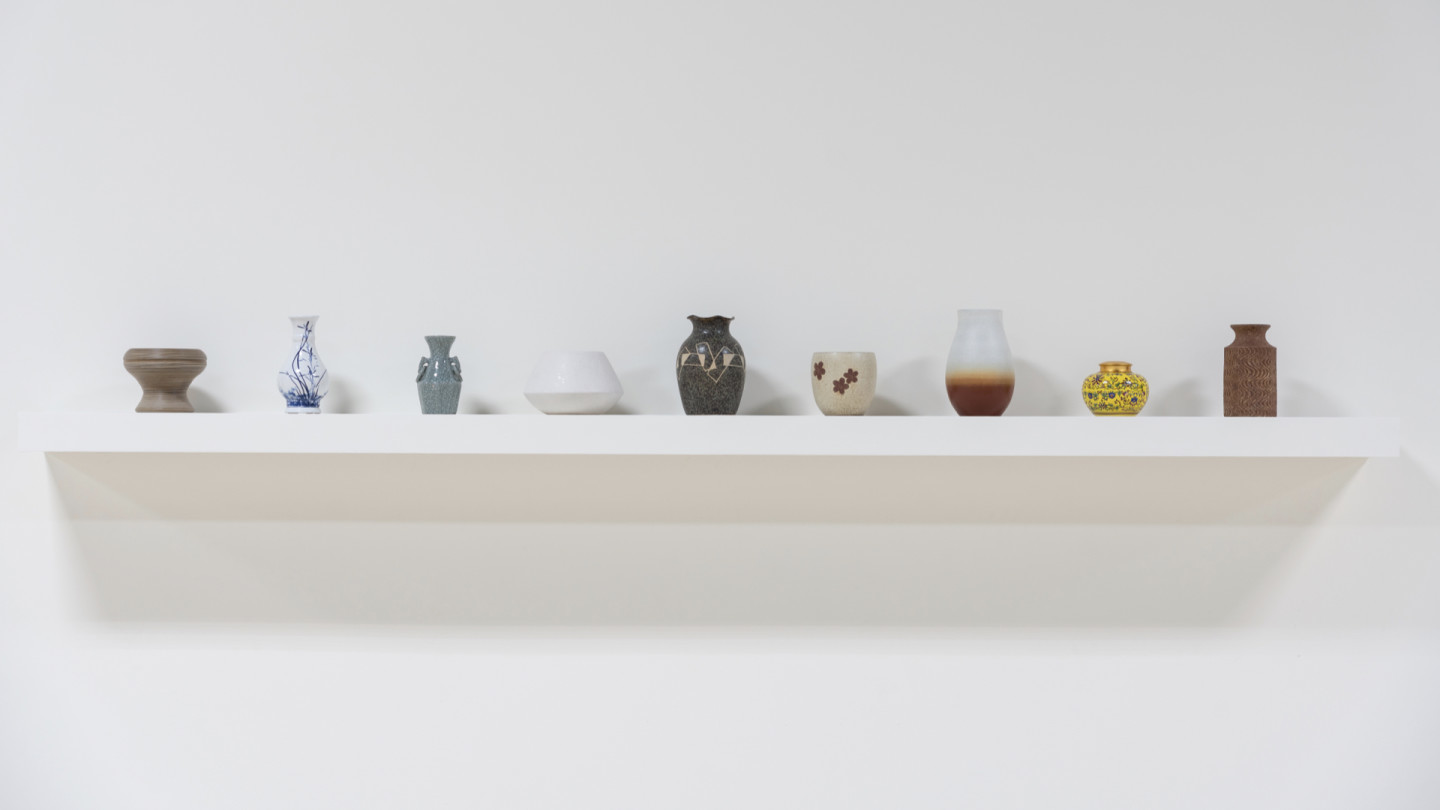 Fig. 10: Dorian GAUDIN, Pharmakos, 2020, ceramic debris, website, shelf, dimensions variable.
Fig. 10: Dorian GAUDIN, Pharmakos, 2020, ceramic debris, website, shelf, dimensions variable.
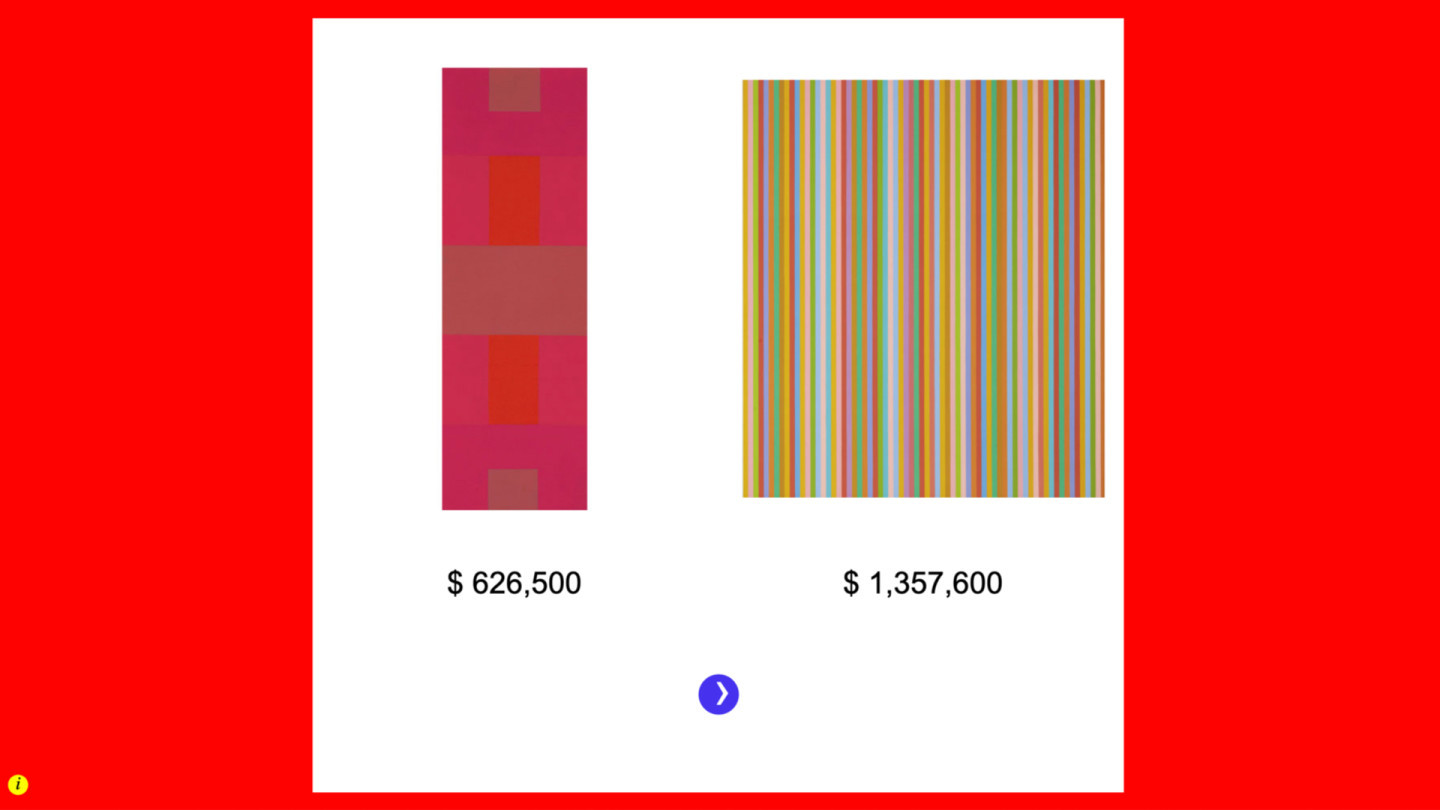 Fig. 11: Claude CLOSKY, Hammer Price, 2019-2020, interactive website unlimited duration.
Fig. 11: Claude CLOSKY, Hammer Price, 2019-2020, interactive website unlimited duration.
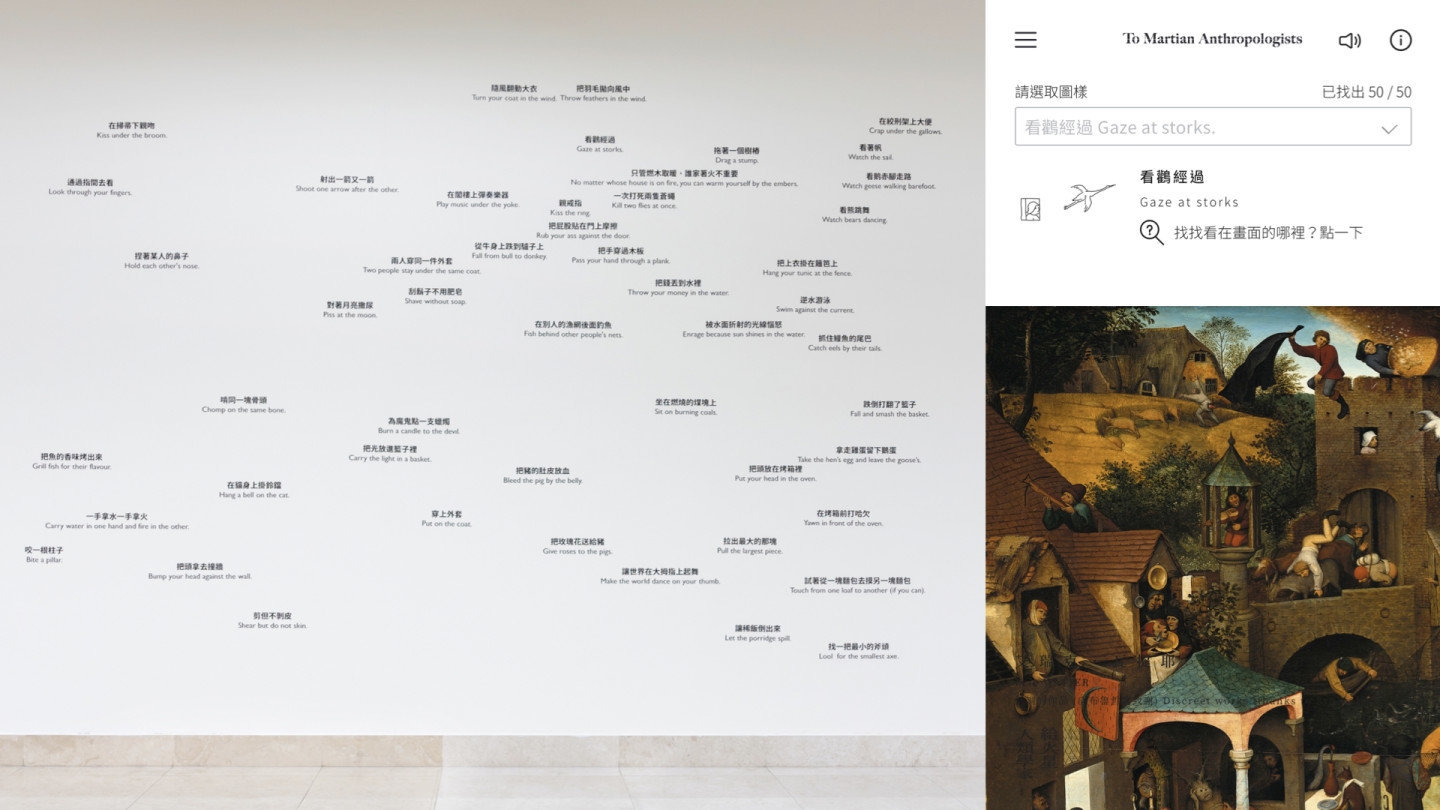 Fig. 12, left: Eric WATIER, Discreet Works (thanks to Bruegel), 2019, cutting sheet, 450×300 cm. Right: Eric WATIER × Chun-Yi CHANG, Discreet Works (thanks to Bruegel), 2020, interactive and responsive web page.
Fig. 12, left: Eric WATIER, Discreet Works (thanks to Bruegel), 2019, cutting sheet, 450×300 cm. Right: Eric WATIER × Chun-Yi CHANG, Discreet Works (thanks to Bruegel), 2020, interactive and responsive web page.
IV. Philosophical Reinvestigation of the Significance of Existence
Because the world has ceased to hear me, I say to the silent earth: I flow; and to the rushing water: I am. Human beings are truly peculiar creatures: it is obvious that they are suffering from the alienation and imprisonment of yoke because of their own invention of the world cultures and material technologies without even realizing the fact. Therefore, it is not that the world has ceased to hear us, but that human beings have fallen into the abyss of historical contradictions and wandered in panic for centuries. Either flowing or being right here can be interpreted as a philosophical expression to re-exploration of the essence of existence. It may be what Arthur DANTO called the philosophical deprivation of art, but I am still optimistic to see that contemporary art still has an opportunity to go straight to the core of the philosophy of life. The meteorites brought by the “Martian anthropologists” are exactly the stones from other mountains, which can be a source of inspiration for the Earth art, anesthetized daily routines and addition of vulgar practices, and vice versa. The creation of several artists particularly touches on the dialectical meaning of existence, especially around the concept of the word “see”, which implies to understand, to know. Those who see well never judge merely by seeing: from the perspective of a person of complete visual loss, Jun-Qiang NIU in Self-Portrait (Fig. 13) interrogates again the true meaning of “seeing” and “not seeing”. Who is really blind? The blind in heart and in eyes, which is more blind? James Ming-Hsueh LEE in Distant Hollow even questions “to see is to believe” as an ideology. Craig QUINTERO in The Out There is Truth (Fig. 14) returns the truth to a mysterious realm by repeating the technique of defamiliarization of David Lynch and the famous tagline of the TV series X-Files: “chaos” regains as truth its dominant position in Genesis. Finally, Draw a Circle and Wanderer’s Clock #3 (Fig. 15) by Ya-Hui WANG enlighten the path to harmony between rules of the universe and actions of human beings: tens of thousands of human beings like ants thronged on the ground will meet in a hidden order, in an instant.
The trek is over, and the starship still keeps orbiting freely. But this time, the Martians and earthlings are friendly sitting side by side, traveling together through history and contemporary habitus, memories, thoughts, and potentialities, towards an unknown future. The enlightenment of TMA is like the thread in the hands of Ariadne, the daughter of the Cretan king, to help the prince of Athens Theseus to get out of the maze. She is not the truth itself, but a clue to solve complex enigmas.
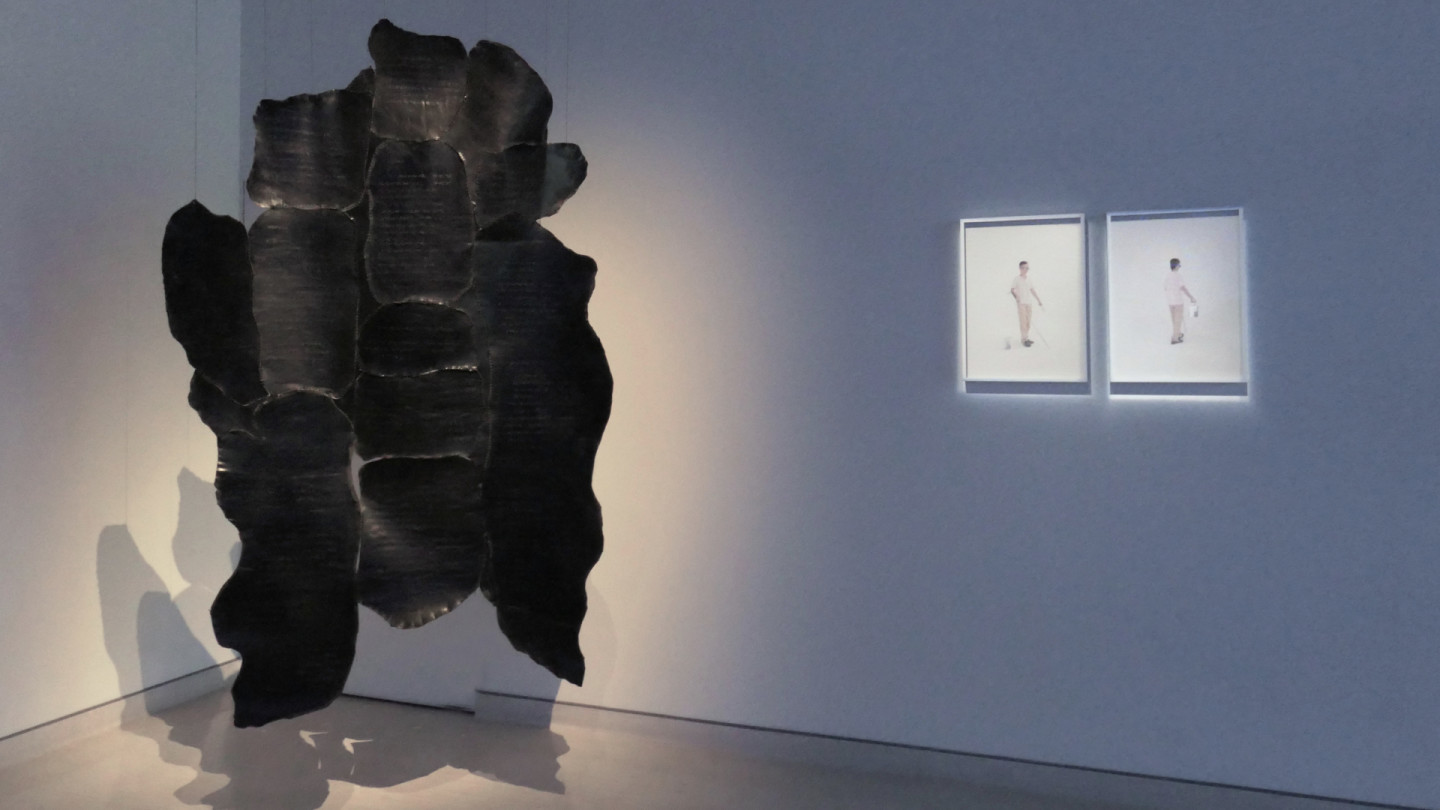 Fig. 13: Jun-Qiang NIU, Self Portrait, 2015, cowhide sculpture, photography, 170×110 cm, 50×37 cm (2 photos).
Fig. 13: Jun-Qiang NIU, Self Portrait, 2015, cowhide sculpture, photography, 170×110 cm, 50×37 cm (2 photos).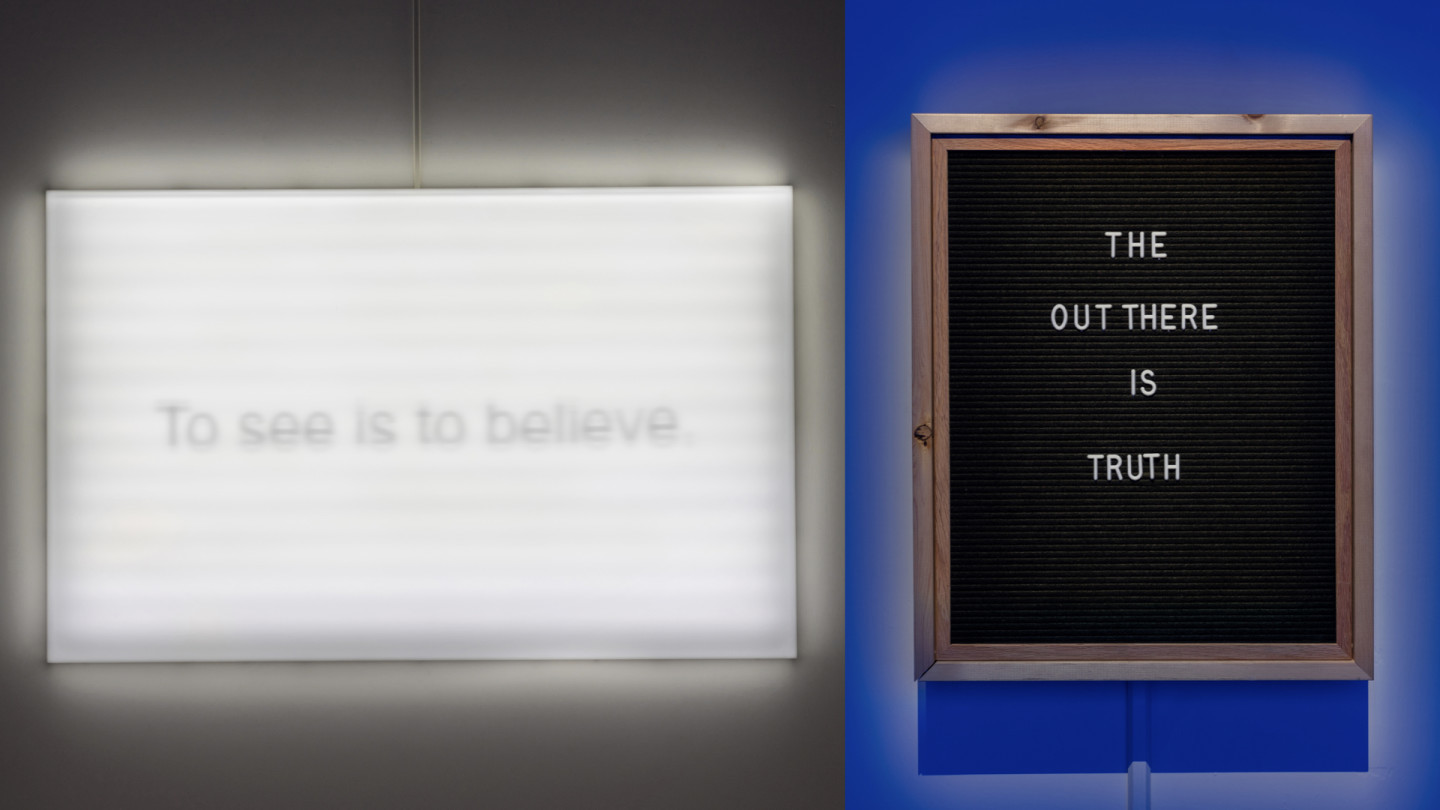 Fig. 14, left: James Ming-Hsueh LEE, Distant Hollow, 2014, mixed media, 171×108×5 cm. Right: Craig QUINTERO×Riverbed Theatre, The Truth is Out There, 2020, sign, wood, plastic letter, generator, 44.2×54.7×8.8 cm.
Fig. 14, left: James Ming-Hsueh LEE, Distant Hollow, 2014, mixed media, 171×108×5 cm. Right: Craig QUINTERO×Riverbed Theatre, The Truth is Out There, 2020, sign, wood, plastic letter, generator, 44.2×54.7×8.8 cm.
 Fig. 15, left: Ya-Hui WANG, Draw a Circle, 2020, interactive and responsive web page. Right: Ya-Hui WANG, Wanderer's Clock #3, 2019, stained wood, clock movement, black acrylic, ink, 80×80×3 cm.
Fig. 15, left: Ya-Hui WANG, Draw a Circle, 2020, interactive and responsive web page. Right: Ya-Hui WANG, Wanderer's Clock #3, 2019, stained wood, clock movement, black acrylic, ink, 80×80×3 cm.
Text by Yi-Chen HONG,
adjunct assistant professor,
Department of Sociology,
National Chengchi University
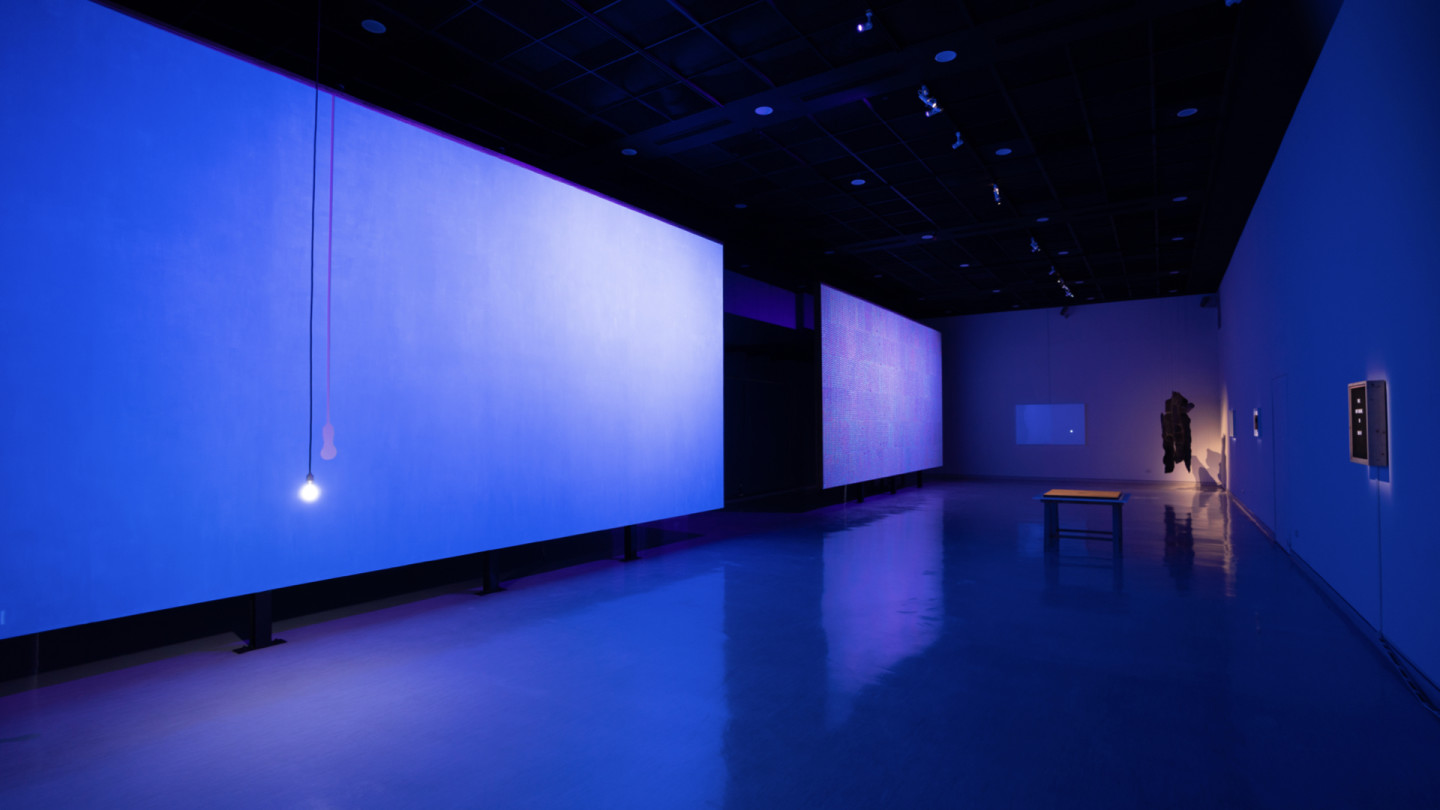 圖1.第二展覽室全景。
圖1.第二展覽室全景。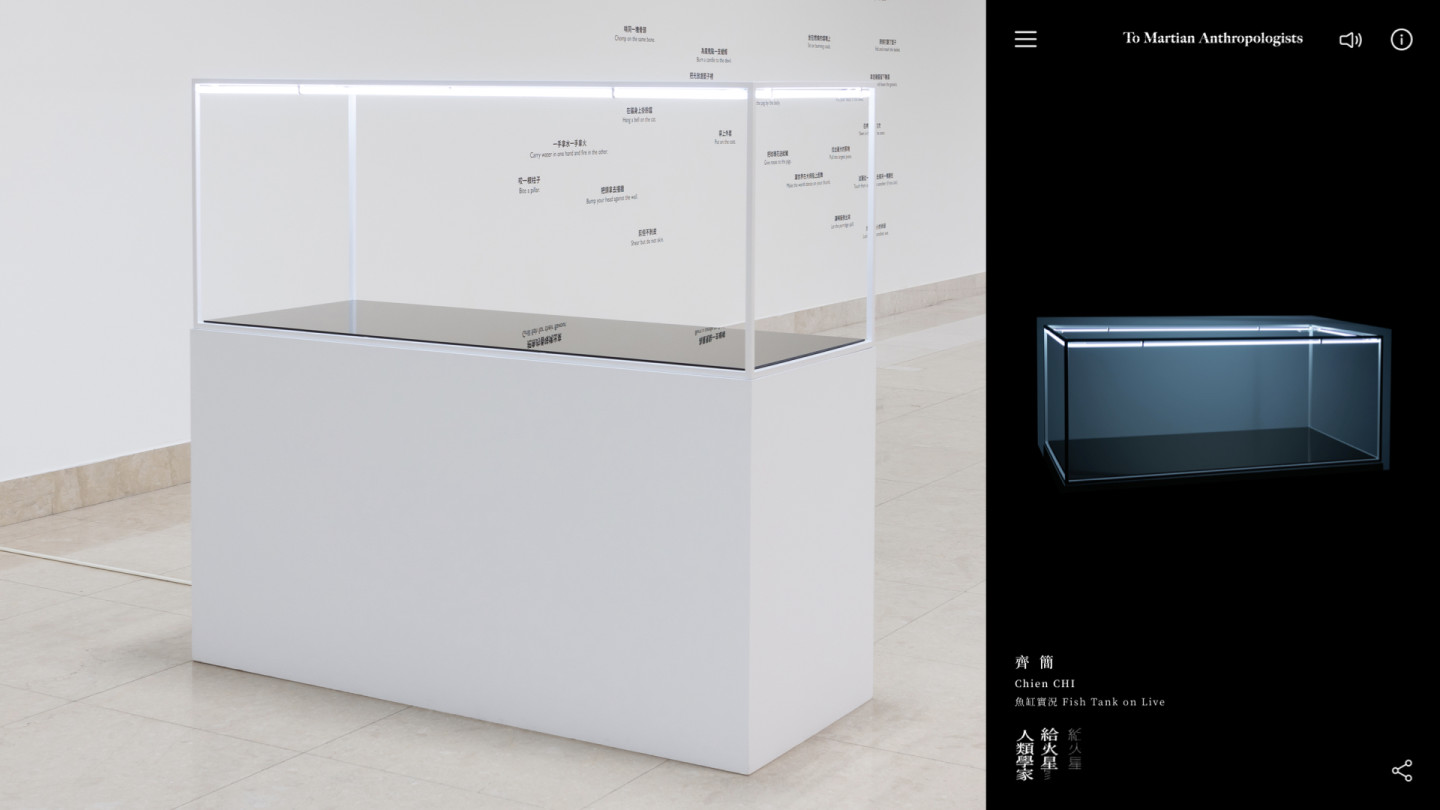 圖2.左為齊簡實體作品《魚缸實況》(鐵、霓虹燈管、鏡子、木材,64 × 161 × 148 cm,2020年),右為《魚缸實況》線上作品互動響應式網頁,2020年)。
圖2.左為齊簡實體作品《魚缸實況》(鐵、霓虹燈管、鏡子、木材,64 × 161 × 148 cm,2020年),右為《魚缸實況》線上作品互動響應式網頁,2020年)。 圖3.左為時永駿實體作品《家庭劇院》(現成物、傢俱、椅子、陶、繪畫、舞臺布幕,尺寸依現場而定,2020年。),右為線上作品《家庭劇院》(互動響應式網頁,2020年)。
圖3.左為時永駿實體作品《家庭劇院》(現成物、傢俱、椅子、陶、繪畫、舞臺布幕,尺寸依現場而定,2020年。),右為線上作品《家庭劇院》(互動響應式網頁,2020年)。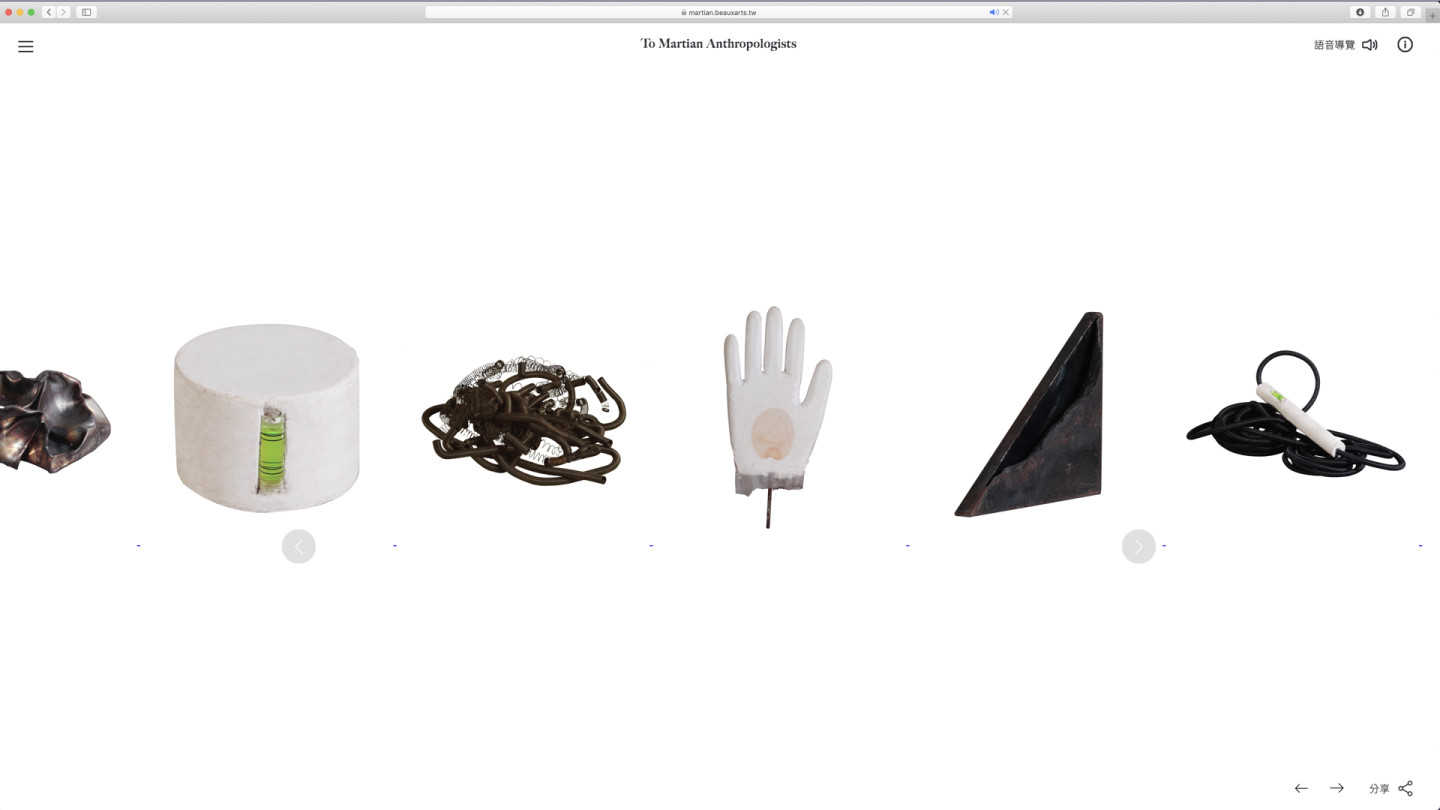 圖4.徐瑞謙 × 澎葉生,《材料行》,互動響應式網頁,2020年。
圖4.徐瑞謙 × 澎葉生,《材料行》,互動響應式網頁,2020年。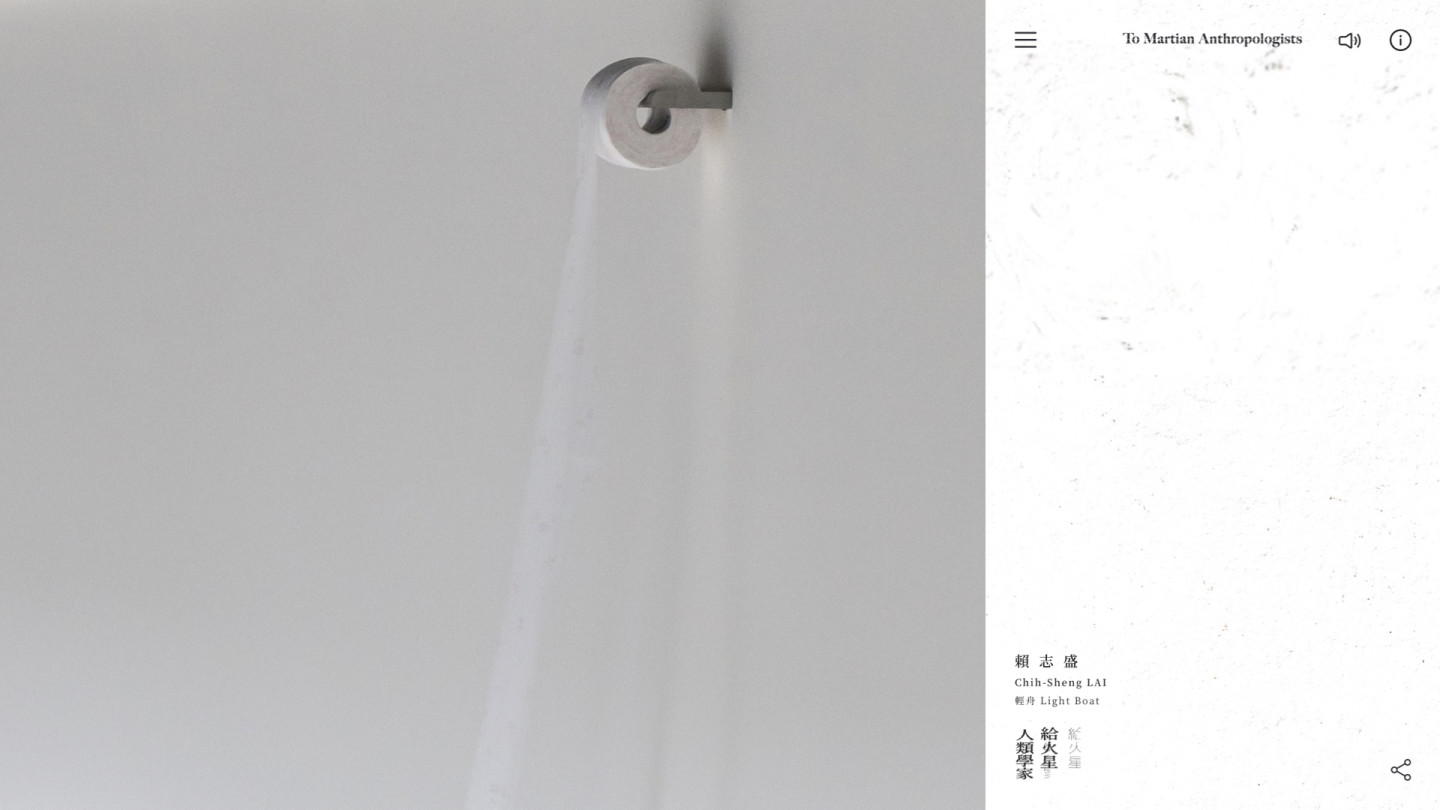 圖5.賴志盛,《手紙》,不鏽鋼、衛生紙、風,尺寸依場地而定,2019年。
圖5.賴志盛,《手紙》,不鏽鋼、衛生紙、風,尺寸依場地而定,2019年。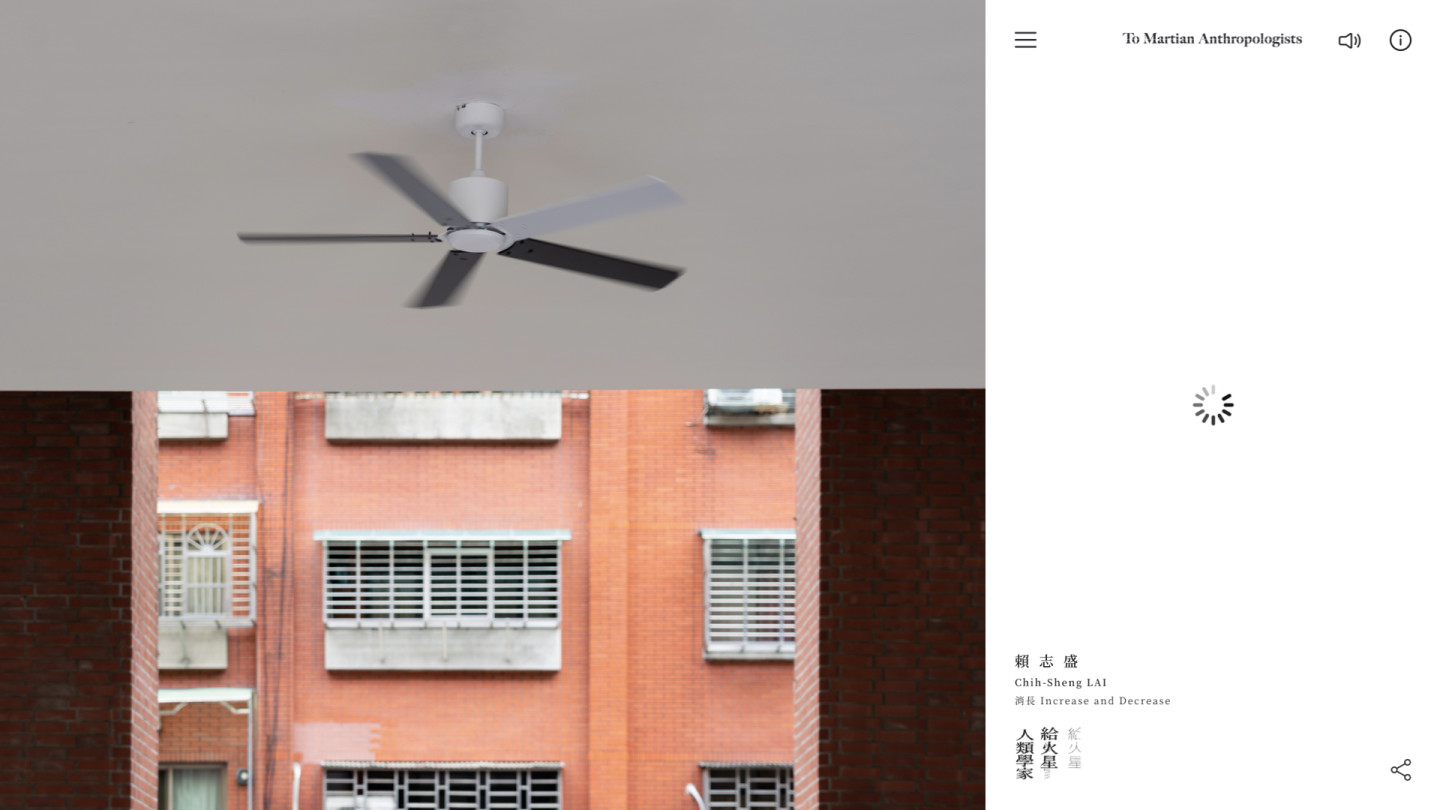 圖6.賴志盛 ,《輕風徐來》,吊扇、漆,尺寸依場地而定,2020年。
圖6.賴志盛 ,《輕風徐來》,吊扇、漆,尺寸依場地而定,2020年。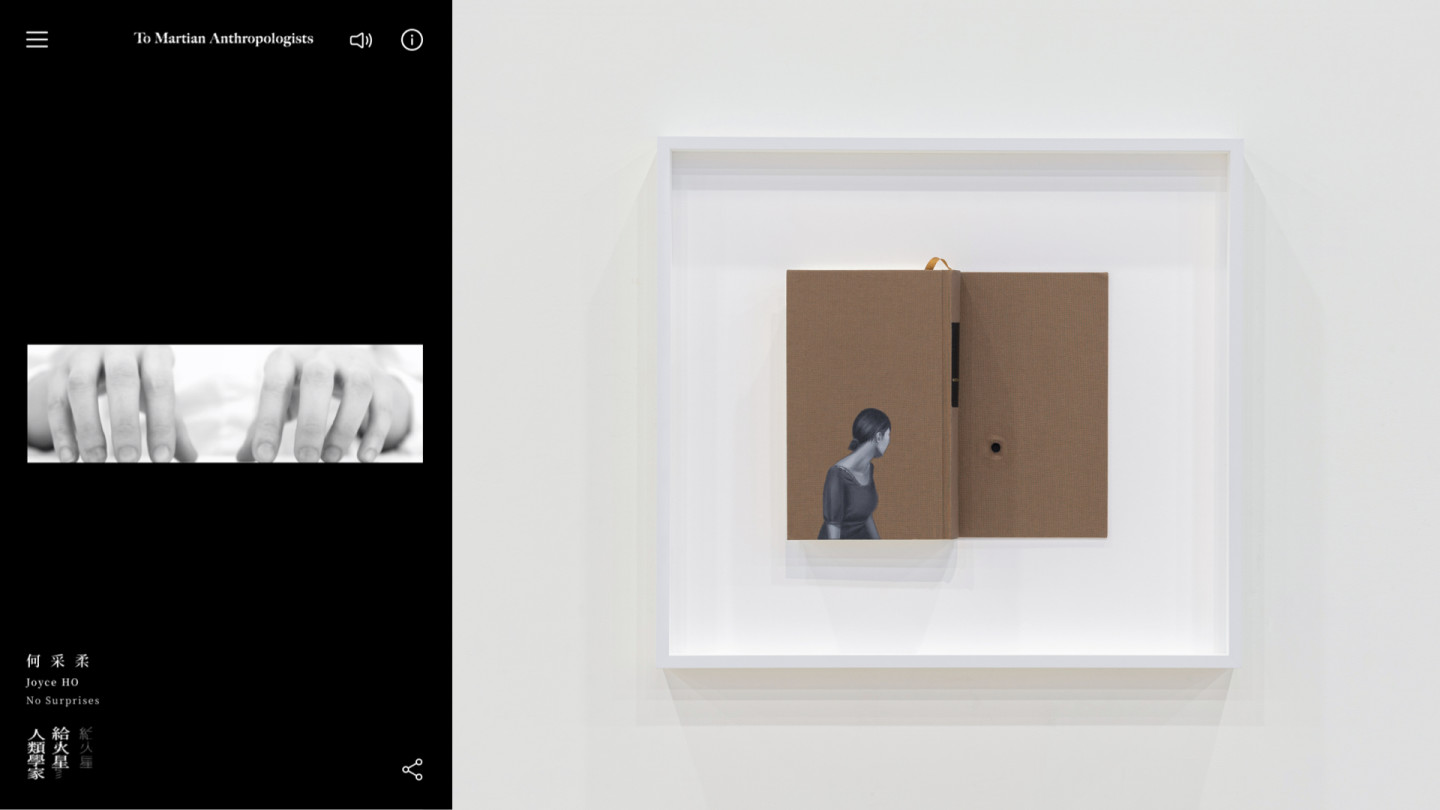 圖7.左為何采柔線上作品 No Surprises (互動響應式網頁,2020年),右為實體作品Metamorphoses(壓克力顏料、書籍封面、鋁框 ,41.5 × 46 × 4 cm,2019年)。
圖7.左為何采柔線上作品 No Surprises (互動響應式網頁,2020年),右為實體作品Metamorphoses(壓克力顏料、書籍封面、鋁框 ,41.5 × 46 × 4 cm,2019年)。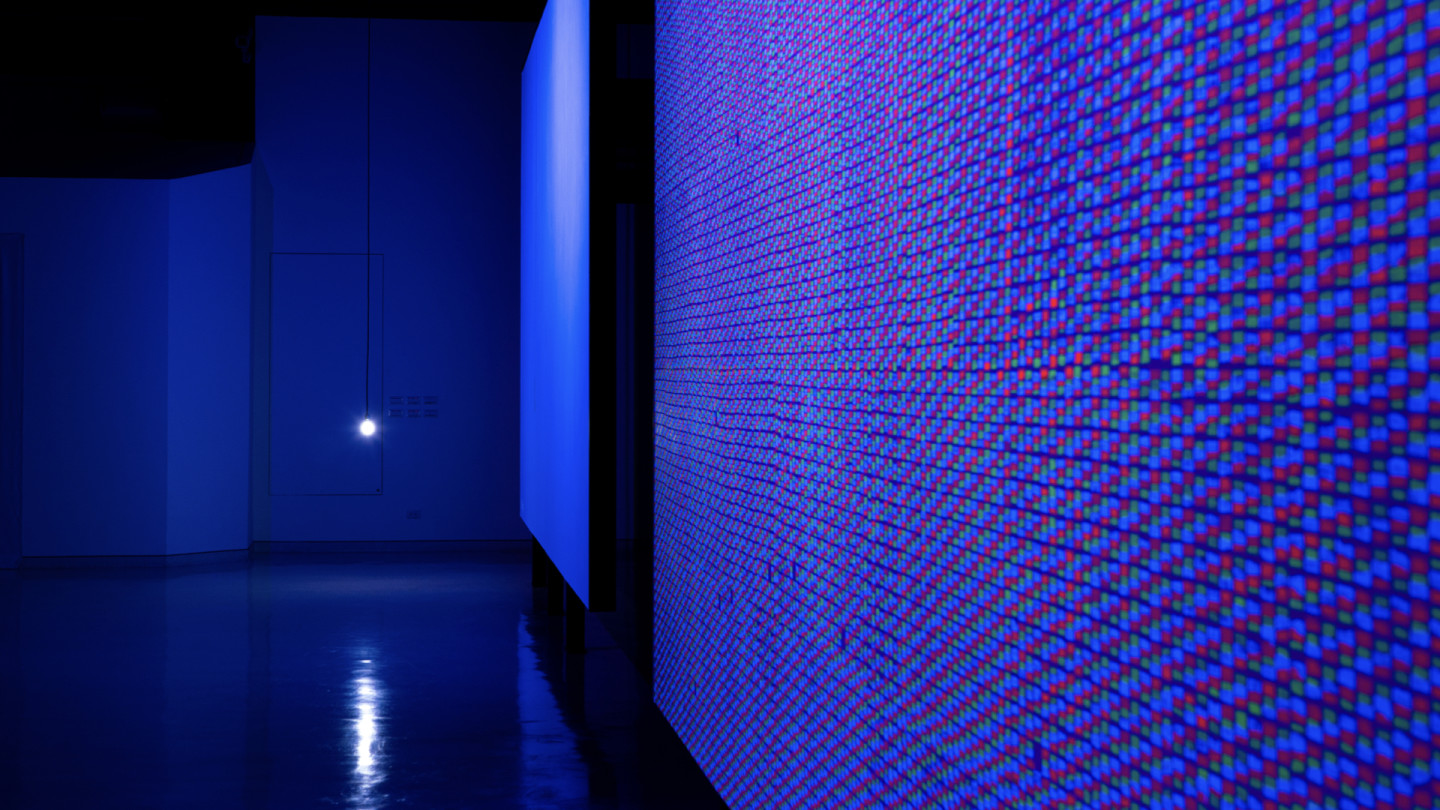 圖8.近景:謝佑承,《像素與星叢》,螢光漆、現成物、螢光墨水、螢光燈具,尺寸依場地而定,2020年。遠景:謝佑承,《校準:藍幕》,螢光漆、現成物、螢光墨水、螢光燈具,尺寸依場地而定,2020年。
圖8.近景:謝佑承,《像素與星叢》,螢光漆、現成物、螢光墨水、螢光燈具,尺寸依場地而定,2020年。遠景:謝佑承,《校準:藍幕》,螢光漆、現成物、螢光墨水、螢光燈具,尺寸依場地而定,2020年。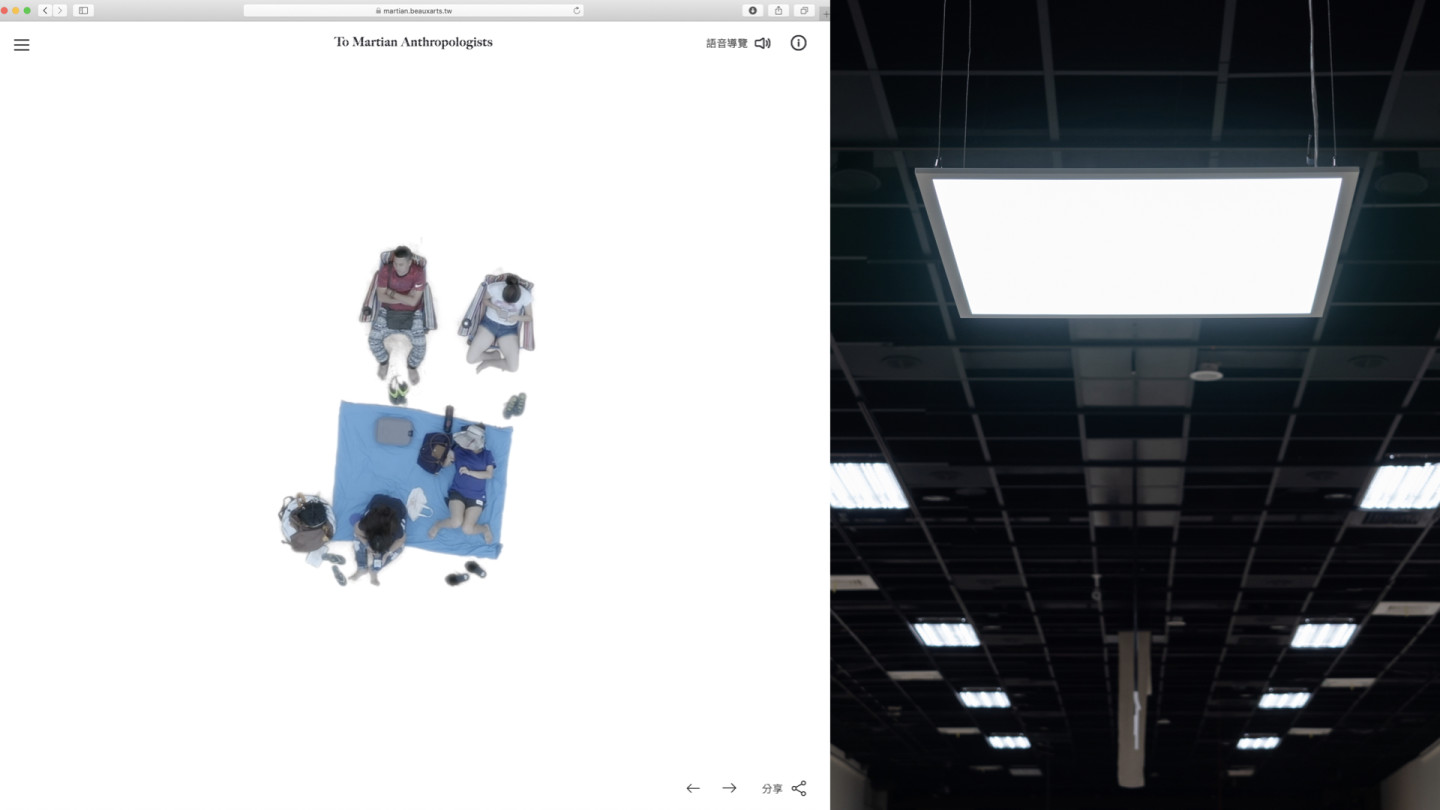 圖9.左為陳萬仁線上作品 I’M LITTLE BUT I HAVE BIG DREAMS(互動響應式網頁,2020年)右為實體作品 I’M LITTLE BUT I HAVE BIG DREAMS( LED平板燈,60 × 60 cm,2020年)。
圖9.左為陳萬仁線上作品 I’M LITTLE BUT I HAVE BIG DREAMS(互動響應式網頁,2020年)右為實體作品 I’M LITTLE BUT I HAVE BIG DREAMS( LED平板燈,60 × 60 cm,2020年)。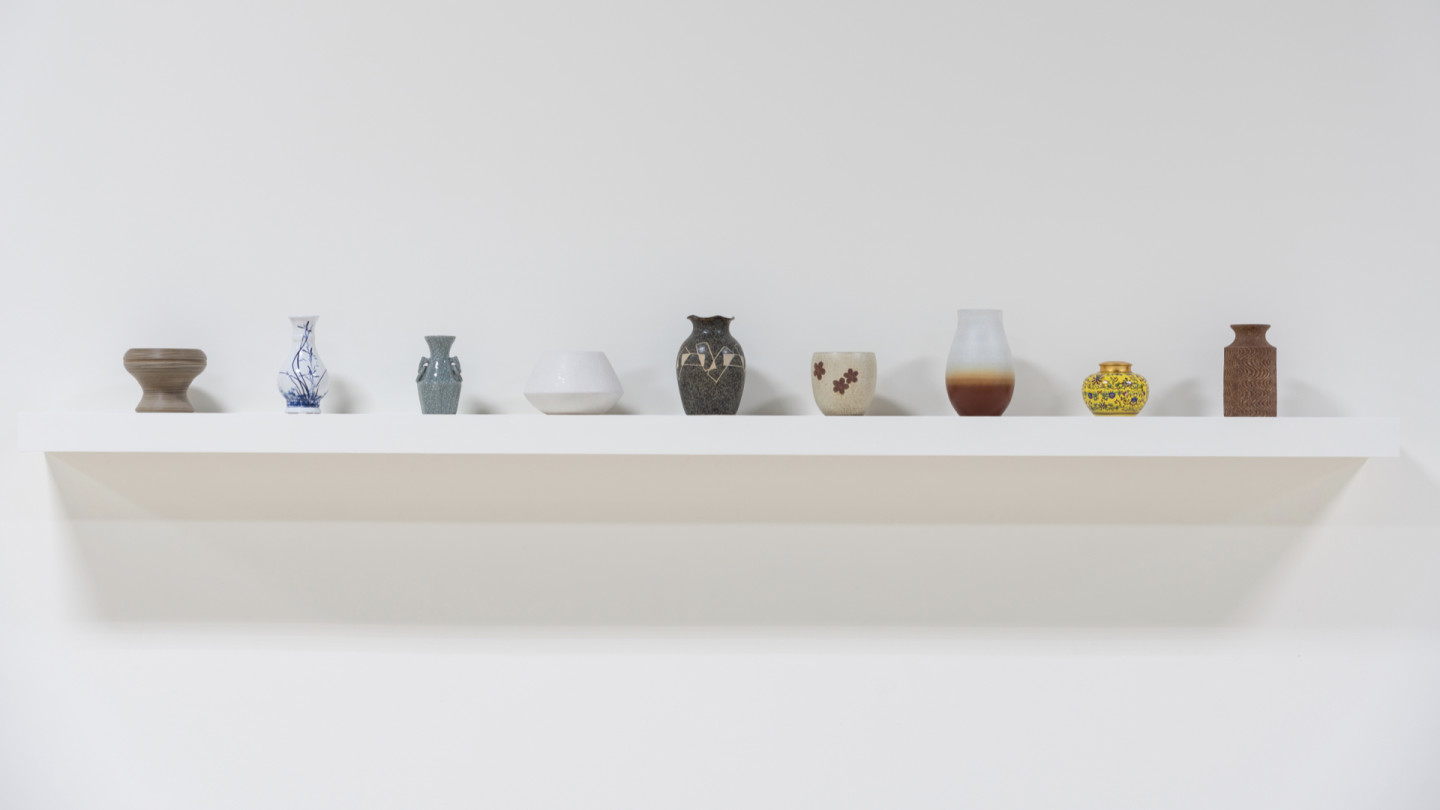 圖10.杜利安.高登,《代罪者》,陶瓷碎片、網站、層架,尺寸依場地而定,2020年。
圖10.杜利安.高登,《代罪者》,陶瓷碎片、網站、層架,尺寸依場地而定,2020年。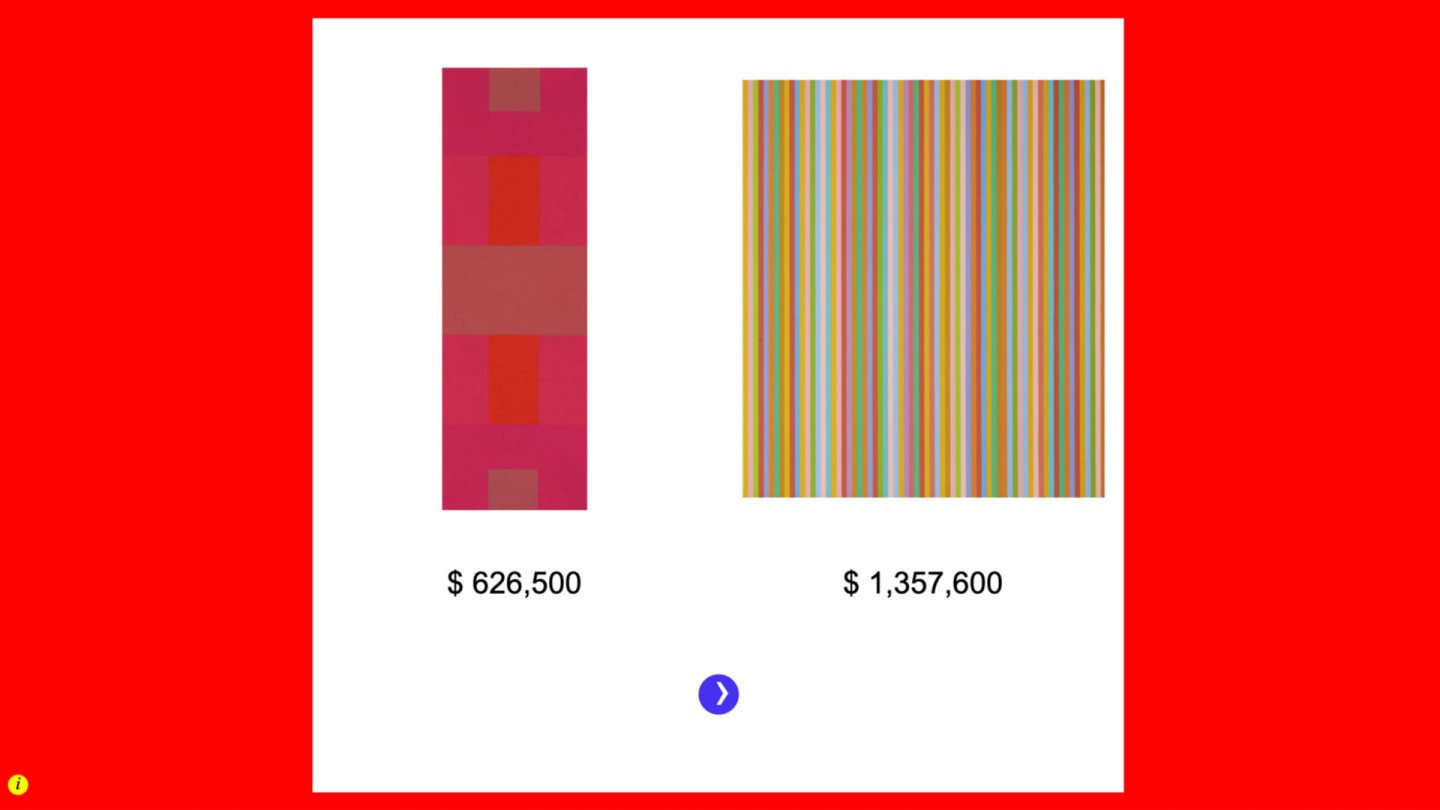 圖11.克羅德・克勞斯基,《拍賣價》,互動響應式網頁,2020年。
圖11.克羅德・克勞斯基,《拍賣價》,互動響應式網頁,2020年。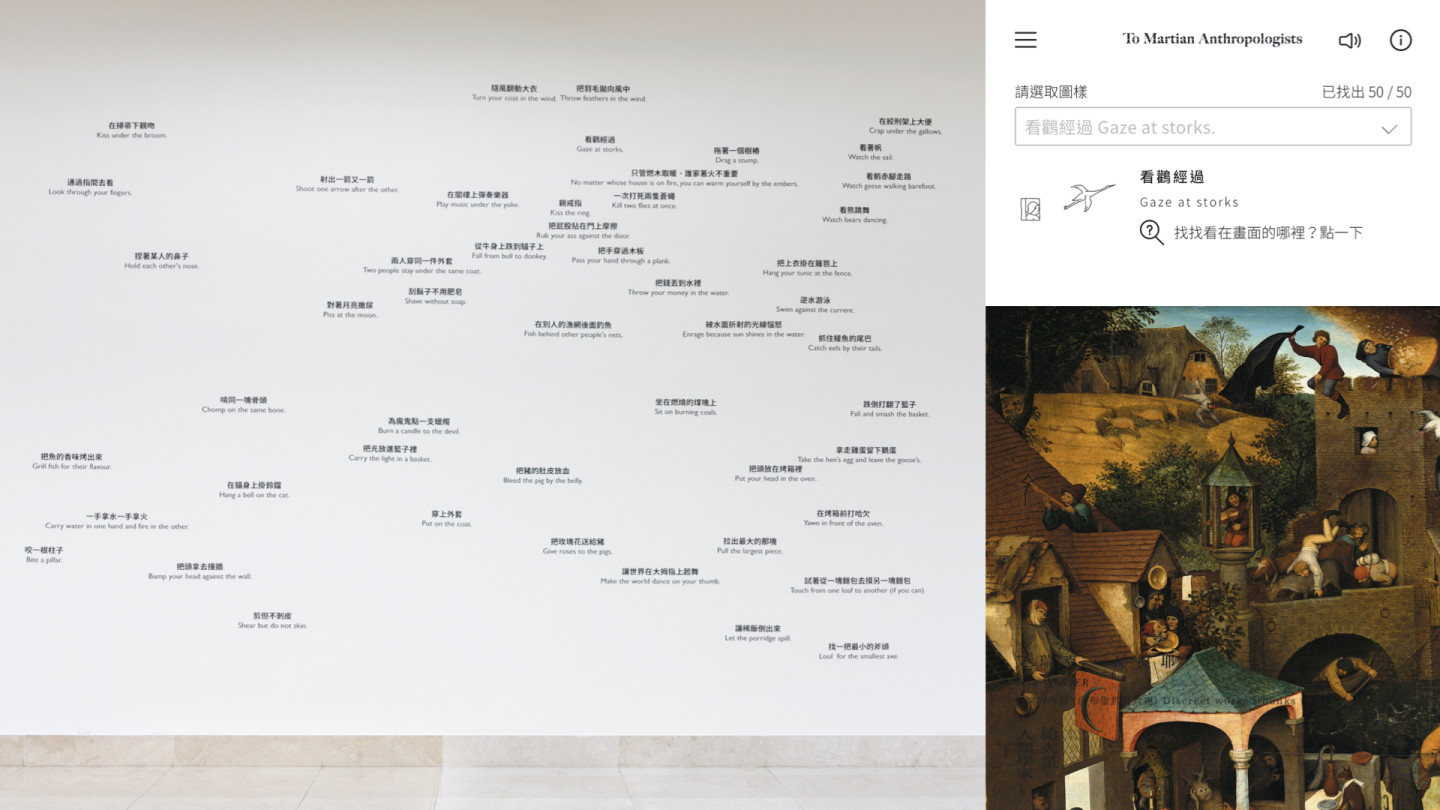 圖12.左為艾瑞克.瓦提耶(Eric WATIER)x 張君懿實體作品《低調的作品—向布勒哲爾致意》(卡典西德,450×300cm,2020年)。右為線上作品《低調的作品—向布勒哲爾致意》(互動響應式網頁,2020年)。
圖12.左為艾瑞克.瓦提耶(Eric WATIER)x 張君懿實體作品《低調的作品—向布勒哲爾致意》(卡典西德,450×300cm,2020年)。右為線上作品《低調的作品—向布勒哲爾致意》(互動響應式網頁,2020年)。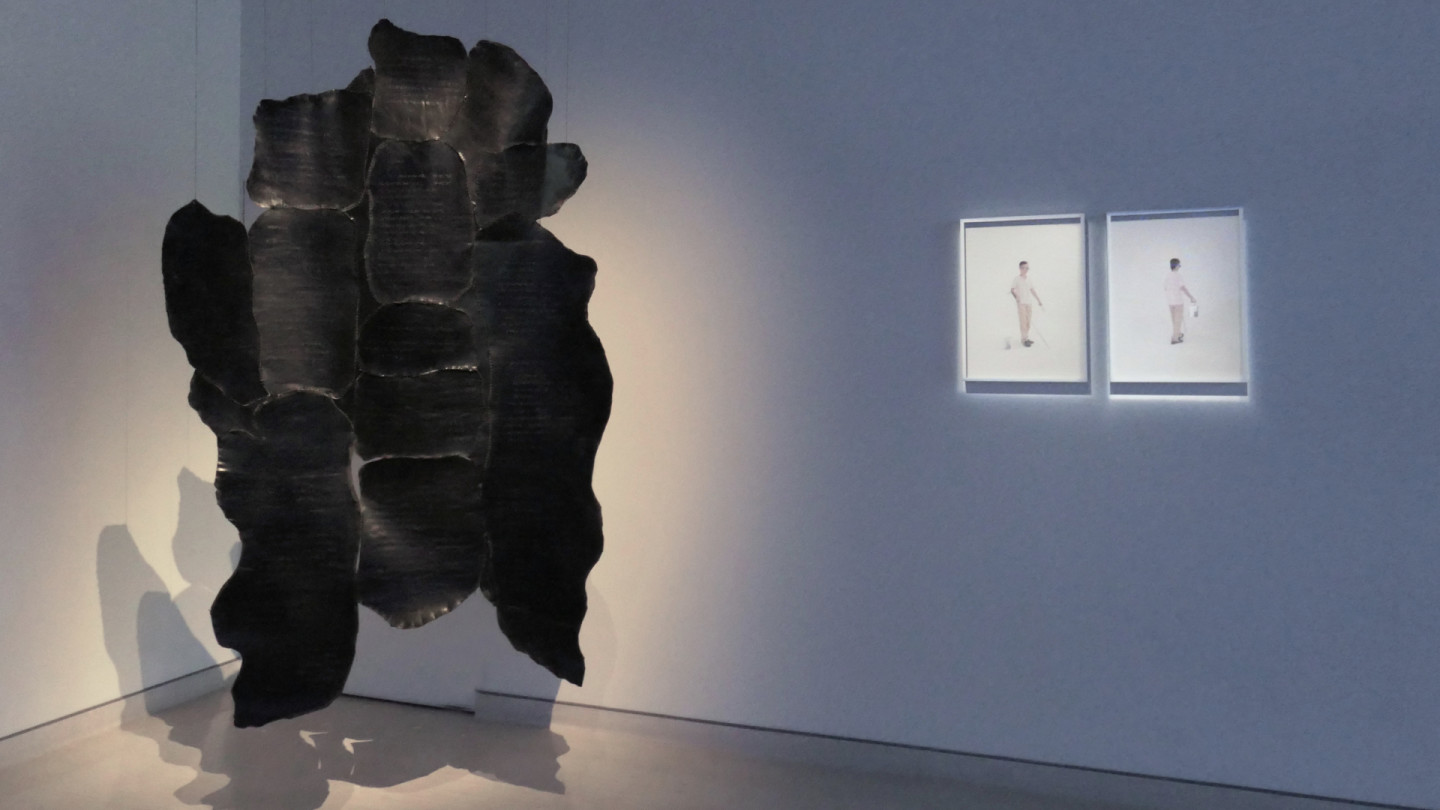 圖13.牛俊強,Self Portrait,牛皮雕塑、攝影,170 × 110 cm, 50 × 37 cm ,2020年。
圖13.牛俊強,Self Portrait,牛皮雕塑、攝影,170 × 110 cm, 50 × 37 cm ,2020年。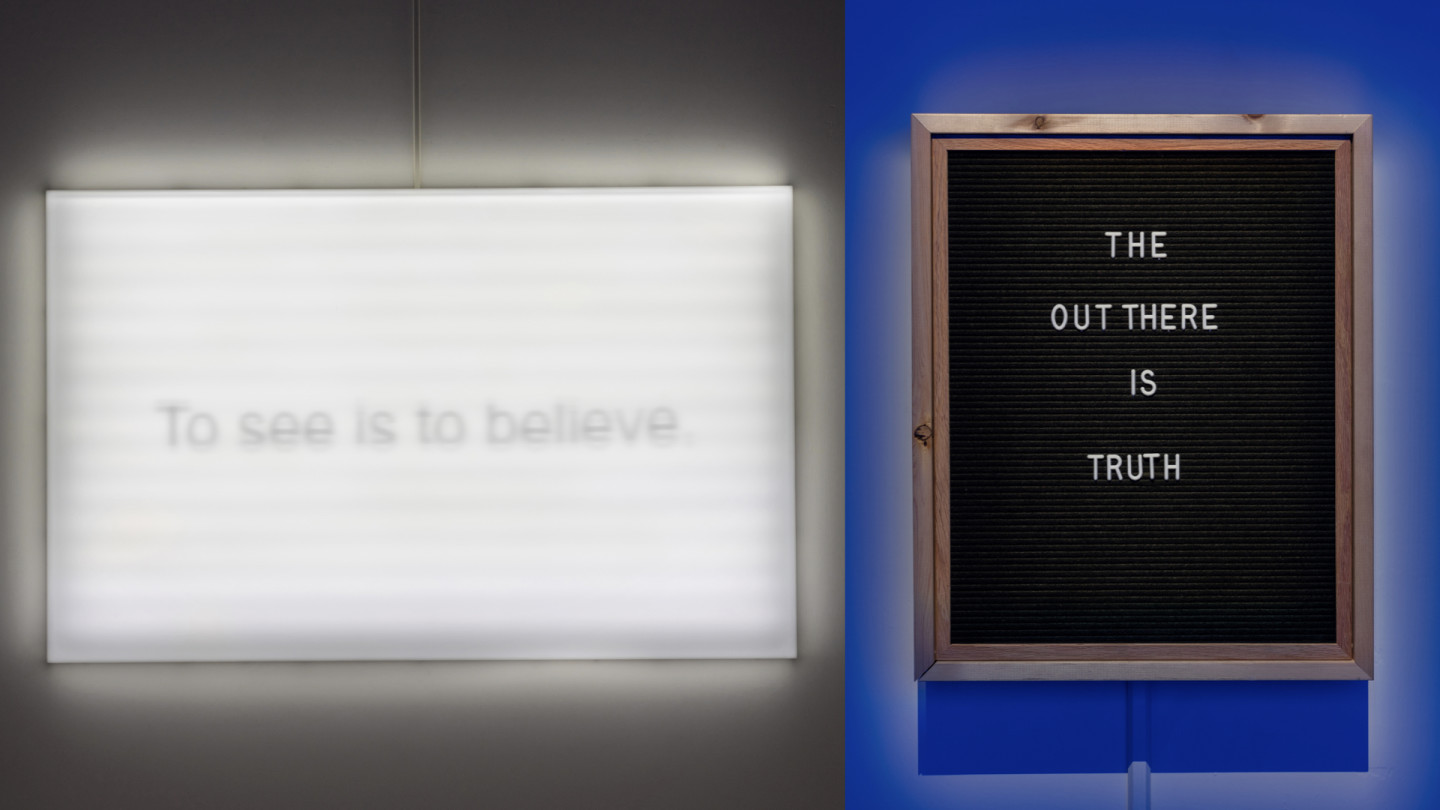 圖14.左為李明學,《遙望的空洞》,複合媒材,尺寸依場地而定,2014年。右為郭文泰The Truth is Out There,標誌、木頭、塑膠文字、發電機,44.2 × 54.7 × 8.8 cm,2020年。
圖14.左為李明學,《遙望的空洞》,複合媒材,尺寸依場地而定,2014年。右為郭文泰The Truth is Out There,標誌、木頭、塑膠文字、發電機,44.2 × 54.7 × 8.8 cm,2020年。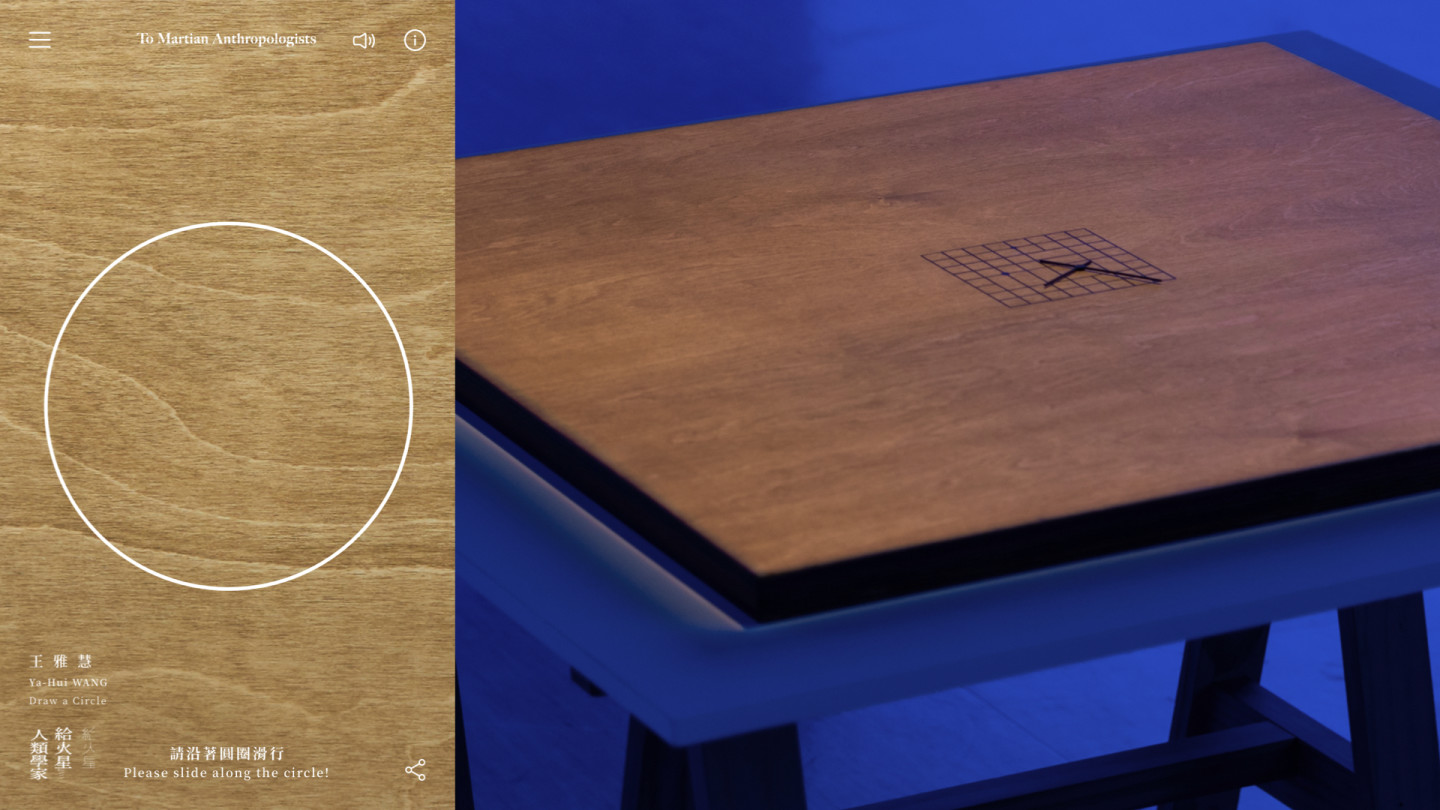 圖15.左為王雅慧線上作品Draw a Circle(互動響應式網頁,2020年。右為實體作品《流浪者之鐘 #3》,染色木板、時鐘機芯、黑色壓克力、油墨,80×80×3cm,2019年。
圖15.左為王雅慧線上作品Draw a Circle(互動響應式網頁,2020年。右為實體作品《流浪者之鐘 #3》,染色木板、時鐘機芯、黑色壓克力、油墨,80×80×3cm,2019年。













